文章
Miss Chen
2022年02月11日

Carnations, known as dianthus (Dianthus caryophyllus), are a perennial grown widely for use as cut flowers. Who among us hasn't been gifted with a carnation corsage, boutonniere, or bouquet? Carnations are a variety of dianthus, also known as pinks, because their natural color range includes many shades of pink, white, coral, and red. White carnations are frequently dyed various colors for holidays (like green for Saint Patrick's Day or pastel colors for Easter). True carnations have a ruffly appearance that holds its own in flower arrangements, and they have a distinctive, spicy, faintly clove-like scent loved by many.
The dianthus has been widely cultivated for more than two thousand years, based on its mention in ancient Greek texts. Pinning down its native locale is difficult, but some botanists theorize it originated somewhere in the Mediterranean. Dianthus translates from the Greek for "divine flower," while "carnation" is a Latin word meaning "crown" or "garland."
Botanical Name Dianthus caryophyllus
Common Name Carnation, pinks
Plant Type Flowering perennial
Mature Size 12-18 inches
Sun Exposure Full sun to partial shade
Soil Type Alkaline, fertile, well drained
Soil pH 7-8
Bloom Time late spring; reblooms
Flower Color white, pink, red
Hardiness Zones USDA 7-10
Native Areas Italy, Spain, Greece, Croatia
Carnation Care
Dianthus are fairly easy to grow and care for. Dianthus carophyllus does best in USDA hardiness Zones 7 to 10, so it is not quite as cold hardy as other dianthus varieties. Although dianthus are sometimes known as a short-lived perennial, if they have the right conditions, you can expect years of beauty and fragrance from them. They're a beautiful choice for the cottage garden with their vibrant colors and easy seasonal care. Deadheading them after first bloom helps insure re-blooming later in the season. They do best without mulch, but if you do mulch use a natural mulch instead of dyed mulches. Carnations, like all dianthus, are deer resistant, but rabbits may enjoy nibbling on the leaves.

Soil
Carnations require excellent drainage and an alkaline soil, also referred to as "sweet" soil. Alkaline soil tends to have slightly higher concentrations of calcium, magnesium, and sodium. If your soil tends to be acidic, adding a bit of lime when planting carnations will get them off to a good start.
Light
Although they do best in full sun, carnations are fine with some partial shade. Too much bright afternoon sun might cause the petals of brightly colored carnations to fade. Plant your carnations where they'll get morning sun rather than afternoon sun, if possible, to keep the flowers looking fresh and the colors bright.
Water
Dianthus carophyllus are relatively drought tolerant but they need regular water in spring when their flower buds are forming. During dry spells in summer they may need an extra drink of water. Water at the base of the plant. However, be careful not to over water, or the leaves may yellow and the flower petals may droop or fall off.
Temperature and Humidity
Carnations like a warm environment, but will wilt in extreme heat. They do best in low humidity. However, an occasional light spritz of cool water during very hot weather may help cool them down a bit.
In cats, carnation leaves can be a source of mild toxicity if ingested, causing vomiting and/or diarrhea. Depending on how much of the plant your cat has ingested, they may vomit more than once. Symptoms following vomiting may include mild dehydration or loss of appetite; these should resolve within a few hours. Make sure there is fresh water available. Carnations also contain compounds that can cause mild skin irritation, which may cause redness or swelling around the mouth area if your cat eats them. If more serious symptoms are present, or your cat is not on the mend after 8 hours, consult your veterinarian. In dogs, poisoning from carnations presents as dermatitis and digestive problems.
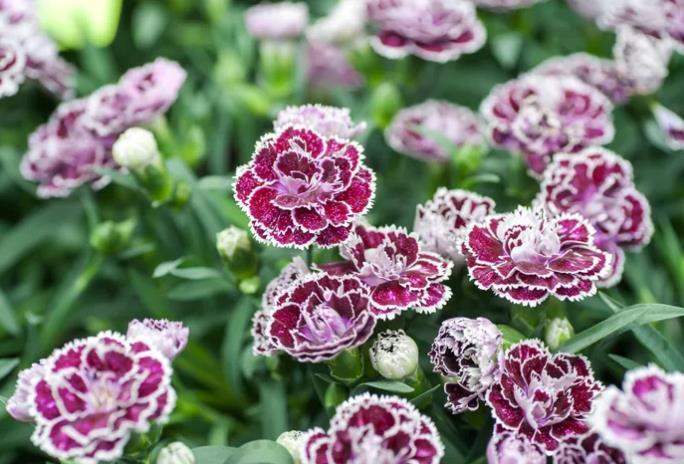
Carnation Varieties
There are three basic types of carnation available to the home grower: large-flowered carnations (also known as standard carnations), dwarf-flowered carnations, and spray or miniature carnations. The following cultivars are a very small sample of the thousands of varieties available.
Chabaud carnations: these large standard carnations come in a variety of cultivars including "Jeanne Dionis" (white), "Benigna" (picotee white edged with magenta), "Aurora" (range of medium to dark pink), "Orange Sherbet" (warm, deep coral), and "La France" (classic pale pink)
Spray carnation cultivars include "Elegance" (white edged pink), "Exquisite" (white edged purple), and "Rony" (scarlet red).
Some excellent smaller varieties with full double-petaled flowers include "Appleblossom Burst" (shades of pink with deep red centers), "Double Bubble" (bright bubble gum pink), "Grace Bay" (founded cream flower heads edged in magenta) and "Rosy Cheeks" (medium pink with orange centers).
How to Grow Carnations from Seed
If you want to plant carnations from seed, be sure to select cultivars suitable for your growing zone. You can start them indoors in a sunny window, six to eight weeks before the last frost date for your area. Plant them in potting soil, sprinkling seeds over the surface, and covering very lightly with soil. Keep them moist with a mist sprayer, and wrap the planting container loosely with plastic to create a greenhouse effect. Seedlings should germinate within three days. Once they form two or three leaves, put them in their own containers, and let them get at least four to five inches tall before transplanting outside, once frost danger has passed. You may also sow carnations outdoors after frost season has ended, but it's unlikely they will bloom that first year. Do this only if your growing zone is at least USDA 6, to be sure they will survive the winter as a perennial.
The dianthus has been widely cultivated for more than two thousand years, based on its mention in ancient Greek texts. Pinning down its native locale is difficult, but some botanists theorize it originated somewhere in the Mediterranean. Dianthus translates from the Greek for "divine flower," while "carnation" is a Latin word meaning "crown" or "garland."
Botanical Name Dianthus caryophyllus
Common Name Carnation, pinks
Plant Type Flowering perennial
Mature Size 12-18 inches
Sun Exposure Full sun to partial shade
Soil Type Alkaline, fertile, well drained
Soil pH 7-8
Bloom Time late spring; reblooms
Flower Color white, pink, red
Hardiness Zones USDA 7-10
Native Areas Italy, Spain, Greece, Croatia
Carnation Care
Dianthus are fairly easy to grow and care for. Dianthus carophyllus does best in USDA hardiness Zones 7 to 10, so it is not quite as cold hardy as other dianthus varieties. Although dianthus are sometimes known as a short-lived perennial, if they have the right conditions, you can expect years of beauty and fragrance from them. They're a beautiful choice for the cottage garden with their vibrant colors and easy seasonal care. Deadheading them after first bloom helps insure re-blooming later in the season. They do best without mulch, but if you do mulch use a natural mulch instead of dyed mulches. Carnations, like all dianthus, are deer resistant, but rabbits may enjoy nibbling on the leaves.

Soil
Carnations require excellent drainage and an alkaline soil, also referred to as "sweet" soil. Alkaline soil tends to have slightly higher concentrations of calcium, magnesium, and sodium. If your soil tends to be acidic, adding a bit of lime when planting carnations will get them off to a good start.
Light
Although they do best in full sun, carnations are fine with some partial shade. Too much bright afternoon sun might cause the petals of brightly colored carnations to fade. Plant your carnations where they'll get morning sun rather than afternoon sun, if possible, to keep the flowers looking fresh and the colors bright.
Water
Dianthus carophyllus are relatively drought tolerant but they need regular water in spring when their flower buds are forming. During dry spells in summer they may need an extra drink of water. Water at the base of the plant. However, be careful not to over water, or the leaves may yellow and the flower petals may droop or fall off.
Temperature and Humidity
Carnations like a warm environment, but will wilt in extreme heat. They do best in low humidity. However, an occasional light spritz of cool water during very hot weather may help cool them down a bit.
In cats, carnation leaves can be a source of mild toxicity if ingested, causing vomiting and/or diarrhea. Depending on how much of the plant your cat has ingested, they may vomit more than once. Symptoms following vomiting may include mild dehydration or loss of appetite; these should resolve within a few hours. Make sure there is fresh water available. Carnations also contain compounds that can cause mild skin irritation, which may cause redness or swelling around the mouth area if your cat eats them. If more serious symptoms are present, or your cat is not on the mend after 8 hours, consult your veterinarian. In dogs, poisoning from carnations presents as dermatitis and digestive problems.

Carnation Varieties
There are three basic types of carnation available to the home grower: large-flowered carnations (also known as standard carnations), dwarf-flowered carnations, and spray or miniature carnations. The following cultivars are a very small sample of the thousands of varieties available.
Chabaud carnations: these large standard carnations come in a variety of cultivars including "Jeanne Dionis" (white), "Benigna" (picotee white edged with magenta), "Aurora" (range of medium to dark pink), "Orange Sherbet" (warm, deep coral), and "La France" (classic pale pink)
Spray carnation cultivars include "Elegance" (white edged pink), "Exquisite" (white edged purple), and "Rony" (scarlet red).
Some excellent smaller varieties with full double-petaled flowers include "Appleblossom Burst" (shades of pink with deep red centers), "Double Bubble" (bright bubble gum pink), "Grace Bay" (founded cream flower heads edged in magenta) and "Rosy Cheeks" (medium pink with orange centers).
How to Grow Carnations from Seed
If you want to plant carnations from seed, be sure to select cultivars suitable for your growing zone. You can start them indoors in a sunny window, six to eight weeks before the last frost date for your area. Plant them in potting soil, sprinkling seeds over the surface, and covering very lightly with soil. Keep them moist with a mist sprayer, and wrap the planting container loosely with plastic to create a greenhouse effect. Seedlings should germinate within three days. Once they form two or three leaves, put them in their own containers, and let them get at least four to five inches tall before transplanting outside, once frost danger has passed. You may also sow carnations outdoors after frost season has ended, but it's unlikely they will bloom that first year. Do this only if your growing zone is at least USDA 6, to be sure they will survive the winter as a perennial.
0
0
文章
Miss Chen
2021年11月02日

The 'Bloodgood' cultivar of Japanese maple is an ideal tree for smaller yards. Most people use them as specimen trees, although they are also used in bonsai. They bloom in spring, and this is when the red in their foliage is often at its brightest. The color darkens in summer to burgundy, or even darker. Although the leaves can become even showier in autumn than in summer, the foliage is attractive for a full three seasons of the year.
The leaves of this Japanese maple forms a rounded canopy in an attractive branching pattern: Rather than having a single leader, the plant will often have multiple sub-trunks. Many liken the leaf shape to that on a marijuana plant. The palmatum in the Latin name is also descriptive of the leaf. As on the human hand, where fingers radiate out from the palm, "palmate" foliage bears lobes that fan out from a central point.
In late spring, this tree develops double-winged samaras that redden as they mature and add some ornamental value to the plant. This common tree may reach a height of 20 feet (with a similar spread) at maturity but is a slow grower.
Botanical Name Acer palmatum 'Bloodgood'
Common Name 'Bloodgood' Japanese maple
Plant Type Deciduous tree
Mature Size 15 to 20 feet tall and wide
Sun Exposure Full sun to part shade
Soil Type Chalk, clay, loam, sand
Soil pH Slightly acidic
Bloom Time Summer
Flower Color n/a
Hardiness Zones 5 to 8
Native Area Japan, Asia

How to Grow 'Bloodgood' Japanese Maple Trees
If you plant this tree in the fall, it will benefit from new root growth that occurs during the dormant season: Roots of maples continue to grow throughout the fall and early winter months if temperatures are not below freezing. Also, planting in the fall allows the carbohydrates that are produced during the summer to be directed to root growth, since there is little demand from the top of the tree (which stops growing in late fall and winter). Alternatively, you can plant your Japanese maple in spring; just be careful not to disturb any parts of the plant that have broken bud and are producing new, soft growth.
Mulch is key to growing your maple. Mulch shields the roots from summer heat and winter cold and ensures that the roots retain moisture. You also might want to stake the tree to prevent wind from rocking it back and forth as the new roots are becoming established. Just be sure to remove the stake after the first year, or at least change the tie if it's cutting into the bark of the tree.
Light
Dappled shade is considered the ideal exposure in most regions for this tree, but a bit more shade won't harm it. In fact, in hot climates, a somewhat shady location can help prevent leaf scorch. The leaves tend to develop some green in them in summer if exposed to full sun.
Soil
The soil should drain well and not be too clayey. Apply a loose mulch, such as wood chips or pine needles, over the soil at the beginning of the summer to help retain moisture. Keep mulch several inches away from the trunk of the tree. Re-mulch every year at around the same time.
Water
Water the leaves and branches of this tree semi-regularly, but only water the roots and soil when the weather has been hot and dry for an extended stretch. If the soil gets too saturated, it can cause root rot.
Temperature and Humidity
Plant your Japanese maple where it will be protected from strong winds (which can dry out the soil quickly), and avoid hot and arid sites. Extreme heat can lead to distress; keep the tree's soil mulched and adequately watered during hot weather to minimize damage.
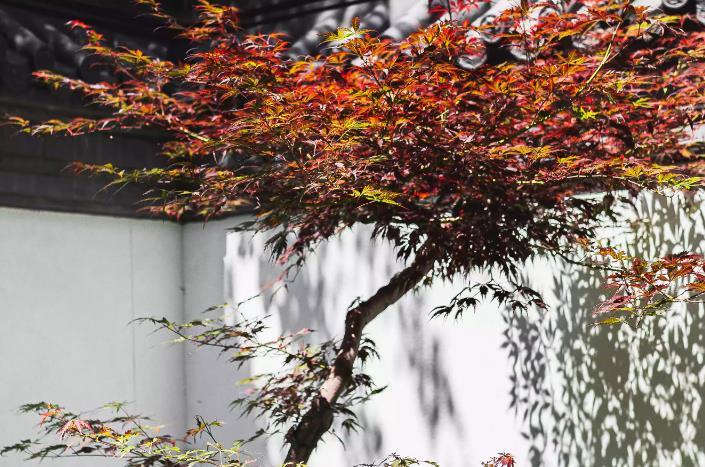
Fertilizer
Don't try to force this tree to grow faster by fertilizing it more than is necessary. In spring, before leaves emerge, add a small amount of organic slow-release fertilizer to the soil. Then fertilize the tree annually, around the same time you add the mulch (early summer).
Varieties of Japanese Maples
Red is the most common color for Japanese maples, although there are also various choices in other colors.
Acer shirasawanum 'Aureum' (Golden Full Moon): Produces lime-to-chartreuse-tinged golden leaves; in fall, leaves turn orange and red
Acer palmatum 'Beni-kawa': Leaves emerge in spring as rich green with slight red edges, then turn deeper green in summer before turning yellow and shedding in fall
Acer palmatum 'Harriet Waldman': Grows to 15 feet tall (same growing conditions as for Bloodgood); new leaves start out pink but eventually turn three colors: pink, white, and green (pink and white fade as the tree ages, leaving green leaves)
Pruning
You can prune young plants to encourage a particular branching pattern. As the tree matures, pruning can be limited to standard maintenance tasks, such as removing dead branches, suckers, or branches.
Common Pests and Diseases
These trees are relatively immune to diseases and pests. However, insects such as aphids, scale, borers, and root weevils can be a problem, as can mites. Root rot and Verticillium wilt can strike if the tree is grown in wet, cold soil. Allowing the soil to dry out between watering sessions is a good way to prevent these diseases.
The leaves of this Japanese maple forms a rounded canopy in an attractive branching pattern: Rather than having a single leader, the plant will often have multiple sub-trunks. Many liken the leaf shape to that on a marijuana plant. The palmatum in the Latin name is also descriptive of the leaf. As on the human hand, where fingers radiate out from the palm, "palmate" foliage bears lobes that fan out from a central point.
In late spring, this tree develops double-winged samaras that redden as they mature and add some ornamental value to the plant. This common tree may reach a height of 20 feet (with a similar spread) at maturity but is a slow grower.
Botanical Name Acer palmatum 'Bloodgood'
Common Name 'Bloodgood' Japanese maple
Plant Type Deciduous tree
Mature Size 15 to 20 feet tall and wide
Sun Exposure Full sun to part shade
Soil Type Chalk, clay, loam, sand
Soil pH Slightly acidic
Bloom Time Summer
Flower Color n/a
Hardiness Zones 5 to 8
Native Area Japan, Asia

How to Grow 'Bloodgood' Japanese Maple Trees
If you plant this tree in the fall, it will benefit from new root growth that occurs during the dormant season: Roots of maples continue to grow throughout the fall and early winter months if temperatures are not below freezing. Also, planting in the fall allows the carbohydrates that are produced during the summer to be directed to root growth, since there is little demand from the top of the tree (which stops growing in late fall and winter). Alternatively, you can plant your Japanese maple in spring; just be careful not to disturb any parts of the plant that have broken bud and are producing new, soft growth.
Mulch is key to growing your maple. Mulch shields the roots from summer heat and winter cold and ensures that the roots retain moisture. You also might want to stake the tree to prevent wind from rocking it back and forth as the new roots are becoming established. Just be sure to remove the stake after the first year, or at least change the tie if it's cutting into the bark of the tree.
Light
Dappled shade is considered the ideal exposure in most regions for this tree, but a bit more shade won't harm it. In fact, in hot climates, a somewhat shady location can help prevent leaf scorch. The leaves tend to develop some green in them in summer if exposed to full sun.
Soil
The soil should drain well and not be too clayey. Apply a loose mulch, such as wood chips or pine needles, over the soil at the beginning of the summer to help retain moisture. Keep mulch several inches away from the trunk of the tree. Re-mulch every year at around the same time.
Water
Water the leaves and branches of this tree semi-regularly, but only water the roots and soil when the weather has been hot and dry for an extended stretch. If the soil gets too saturated, it can cause root rot.
Temperature and Humidity
Plant your Japanese maple where it will be protected from strong winds (which can dry out the soil quickly), and avoid hot and arid sites. Extreme heat can lead to distress; keep the tree's soil mulched and adequately watered during hot weather to minimize damage.

Fertilizer
Don't try to force this tree to grow faster by fertilizing it more than is necessary. In spring, before leaves emerge, add a small amount of organic slow-release fertilizer to the soil. Then fertilize the tree annually, around the same time you add the mulch (early summer).
Varieties of Japanese Maples
Red is the most common color for Japanese maples, although there are also various choices in other colors.
Acer shirasawanum 'Aureum' (Golden Full Moon): Produces lime-to-chartreuse-tinged golden leaves; in fall, leaves turn orange and red
Acer palmatum 'Beni-kawa': Leaves emerge in spring as rich green with slight red edges, then turn deeper green in summer before turning yellow and shedding in fall
Acer palmatum 'Harriet Waldman': Grows to 15 feet tall (same growing conditions as for Bloodgood); new leaves start out pink but eventually turn three colors: pink, white, and green (pink and white fade as the tree ages, leaving green leaves)
Pruning
You can prune young plants to encourage a particular branching pattern. As the tree matures, pruning can be limited to standard maintenance tasks, such as removing dead branches, suckers, or branches.
Common Pests and Diseases
These trees are relatively immune to diseases and pests. However, insects such as aphids, scale, borers, and root weevils can be a problem, as can mites. Root rot and Verticillium wilt can strike if the tree is grown in wet, cold soil. Allowing the soil to dry out between watering sessions is a good way to prevent these diseases.
0
0
文章
Miss Chen
2021年06月01日

Use of plant rooting hormones with other growing agents
To save time, sometimes growers want to apply the rooting solution with a water based fungicide, or other growing agents, together. Selected rates for each product is used. Hortus USA does not recommend mixing Hortus IBA Water Soluble Salts solutions with other plant growth agents. There are many compatibility variables. The grower assumes all responsibility for mixing; evaluation trials must be made on small lots before any production lots are treated.
The method of application determines where the solution acts on the plant cuttings. Basal applications only are to the basal area; the cutting basal end is then stuck below the soil level. Foliar spray drip down application is done after the cuttings have been stuck in media; the solution only reaches the portion of the cutting above the media. Foliar total immerse application has the solution reach all parts of the cutting. Consideration should be made which parts of the cutting are intended to be treated.

Media
When propagating plants from cuttings consideration of individual plant needs relative to the media selected. Some requirements for media selection are pH, the need for water retention, and the absolute necessity of air oxygen to the cuttings. Pond or bog plant cuttings need a media that retains large amounts of water. Succulent plant cuttings need media that allows air flow while retaining little amounts of water.
Most terrestrial plant cuttings from woody plants, annual or perennials need different types of media. Media selection will allow needed oxygen to reach the cuttings. Cleanliness, sometimes sterilization, is essential to avoid pathogen introduction to the cuttings. Media combinations, with sand or pearlite, promote air getting to the cuttings..
Control the temperature
Temperature influences the speed to root cuttings. Higher temperature produces faster effect. If possible keep the temperature between 65-70F. High temperature accelerates fungus and bacterial growth above 70F. High temperature of the ambient air stimulates the growth of shoots at the expense of roots. Keep the air temperature lower than the soil temperature.
Control the light
After Rhizopon AA or Hortus IBA Water Soluble Salt treatment and planting in media the cuttings need light and water. For cuttings with leaves light is required for photo-synthesis to develop natural foods in the form of carbohydrates. Provide shade on bright, hot days to avoid scalding the cuttings. Cuttings without leaves do not require light for rooting; they depend upon stored carbohydrates.
Control the humidity
To prevent the cuttings from dehydrating through the leaves and stems the cuttings are often propagated under mist systems in controlled greenhouses or tunnels, in cutting trays covered with plastic.

Control hardening off
After root initiation harden off slowly by reducing the temperature and humidity. Frequently observe the growing environment and take action to assure that there are no fungus, insects, pathogens, etc. After the cuttings are rooted control the environment to bring the temperature and humidity to the ambient level.
Control the carbon dioxide
Maintain the carbon dioxide at about 1000 ppm.
Testing is essential
The condition of the cuttings or the rooted plant and the resultant rooting potency varies from season to season. Check the results regularly. Adjust the dosage, timing and method of application of Rhizopon AA or Hortus IBA Water Soluble Salt rooting products and other propagation materials. Fluctuation in the climate of the propagation area, varying light intensity, humidity, wetness of the media, type of media, frequency of watering, fungus growth, insect infestation, etc., will affect results. Carrying out a few tests will not take much time. The tests will keep you up to date with results. Tests go along with your normal growing operations and allow you to make timely corrective actions.
To save time, sometimes growers want to apply the rooting solution with a water based fungicide, or other growing agents, together. Selected rates for each product is used. Hortus USA does not recommend mixing Hortus IBA Water Soluble Salts solutions with other plant growth agents. There are many compatibility variables. The grower assumes all responsibility for mixing; evaluation trials must be made on small lots before any production lots are treated.
The method of application determines where the solution acts on the plant cuttings. Basal applications only are to the basal area; the cutting basal end is then stuck below the soil level. Foliar spray drip down application is done after the cuttings have been stuck in media; the solution only reaches the portion of the cutting above the media. Foliar total immerse application has the solution reach all parts of the cutting. Consideration should be made which parts of the cutting are intended to be treated.

Media
When propagating plants from cuttings consideration of individual plant needs relative to the media selected. Some requirements for media selection are pH, the need for water retention, and the absolute necessity of air oxygen to the cuttings. Pond or bog plant cuttings need a media that retains large amounts of water. Succulent plant cuttings need media that allows air flow while retaining little amounts of water.
Most terrestrial plant cuttings from woody plants, annual or perennials need different types of media. Media selection will allow needed oxygen to reach the cuttings. Cleanliness, sometimes sterilization, is essential to avoid pathogen introduction to the cuttings. Media combinations, with sand or pearlite, promote air getting to the cuttings..
Control the temperature
Temperature influences the speed to root cuttings. Higher temperature produces faster effect. If possible keep the temperature between 65-70F. High temperature accelerates fungus and bacterial growth above 70F. High temperature of the ambient air stimulates the growth of shoots at the expense of roots. Keep the air temperature lower than the soil temperature.
Control the light
After Rhizopon AA or Hortus IBA Water Soluble Salt treatment and planting in media the cuttings need light and water. For cuttings with leaves light is required for photo-synthesis to develop natural foods in the form of carbohydrates. Provide shade on bright, hot days to avoid scalding the cuttings. Cuttings without leaves do not require light for rooting; they depend upon stored carbohydrates.
Control the humidity
To prevent the cuttings from dehydrating through the leaves and stems the cuttings are often propagated under mist systems in controlled greenhouses or tunnels, in cutting trays covered with plastic.

Control hardening off
After root initiation harden off slowly by reducing the temperature and humidity. Frequently observe the growing environment and take action to assure that there are no fungus, insects, pathogens, etc. After the cuttings are rooted control the environment to bring the temperature and humidity to the ambient level.
Control the carbon dioxide
Maintain the carbon dioxide at about 1000 ppm.
Testing is essential
The condition of the cuttings or the rooted plant and the resultant rooting potency varies from season to season. Check the results regularly. Adjust the dosage, timing and method of application of Rhizopon AA or Hortus IBA Water Soluble Salt rooting products and other propagation materials. Fluctuation in the climate of the propagation area, varying light intensity, humidity, wetness of the media, type of media, frequency of watering, fungus growth, insect infestation, etc., will affect results. Carrying out a few tests will not take much time. The tests will keep you up to date with results. Tests go along with your normal growing operations and allow you to make timely corrective actions.
0
0
文章
Miss Chen
2021年04月20日

As a novice, I recommend some more popular and relatively easy-to-breed varieties. You can use small pots to raise single plants in a single room, or you can group pots to grow plants with similar habits. If you are a fighter in general cargo, you are strongly recommended to buy these two varieties. The price of real cabbage is a big surprise, and you will not die no matter how you raise it.
1. White Peony
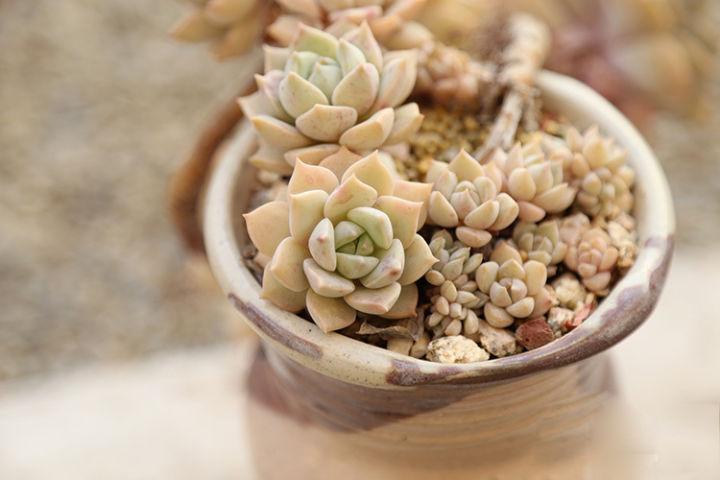
White peonies are tender and tender when they are raised. In the past two years, South Korea brought white peonies of superb quality to the country and sold them at high prices, posing as new varieties. However, because the variety is still relatively general, the temperature difference and light requirements are relatively high if you want to grow a particularly good color. The main surprise that white peony brings is that it is super easy to live.
2. Givalian
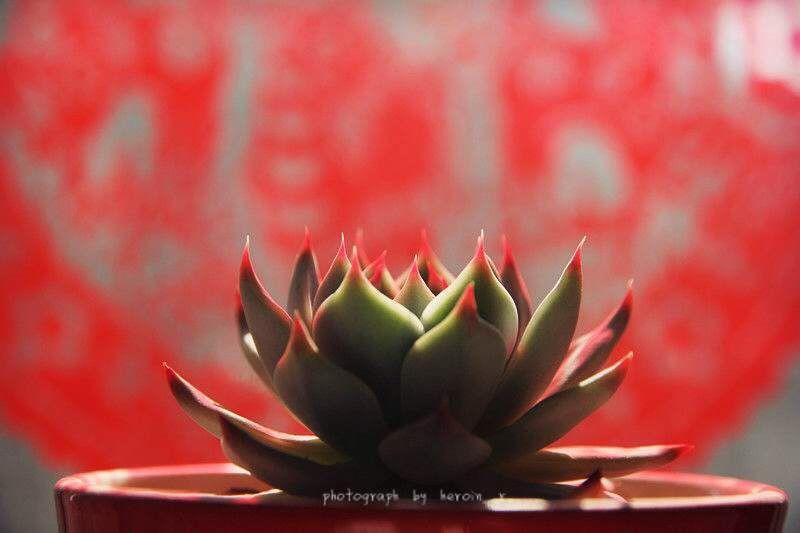
White peony is alive as soon as it is inserted, and Jivalian is basically red as soon as it is exposed to the sun, and it is shining with a little sunshine. In autumn and winter, almost half of the leaves are red tips, which is especially beautiful. And even though it is a common product, Jiwalian rarely grows excessively. In summer, the leaves will elongate and the plant shape is scattered. Most of the time, it is very compact. The magnificent and charming type in everyone's impression, Succulents are always chubby and chubby, but not all of them. Succulents also have romantic varieties like roses.
3. Mountain rose

The rose among the succulents is the mountain rose. The thin leaves are layered on top of each other, rolling out a beautiful heart like a rose, which is very beautiful. Mountain roses are talking about this type of plant, not the name of the variety. In this type of plant, there will be a variety of small roses with petals of different shapes. However, although the plant type is very beautiful, mountain roses are more difficult to produce color, and they are usually green.
4. Lina Lian
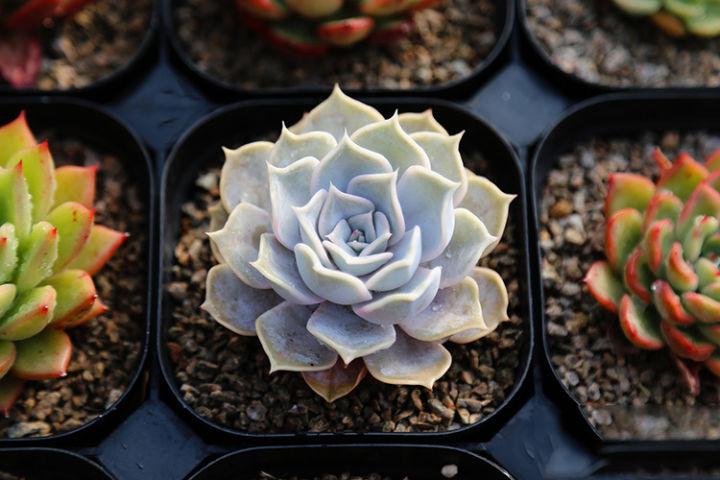
Lina is also a very common general product, because of its unique leaf shape, it has almost become a must-have for the group of pots. In many varieties with round leaves, it can play a good role in adjusting, and Lina is very easy to use. Color, in addition to the unavoidable turning green in summer, other seasons can easily become the kind of light pink that is very girly. However, Lina's words are a bit like white peony. It lives no matter what, but it is a variety that is easier to grow. For the color control, the delicate pink series must not be overlooked. Every year in autumn and winter, these pink varieties are simply going to be beautiful.
5. Debbie

The pink variety is a classic must-have. It grows fast, and is not so easy to grow. It is easier to control the plant type and color, and novices can also grow beautiful.
6, peach eggs
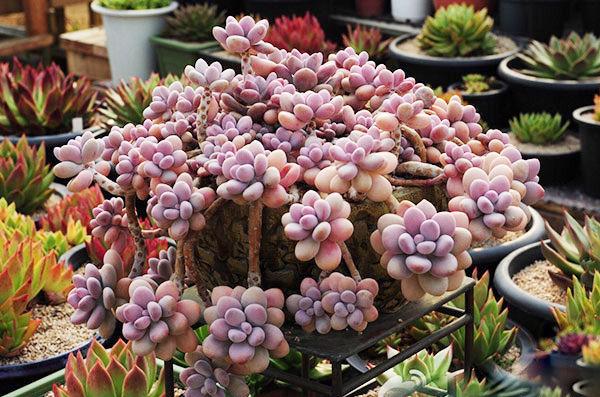
The characteristic of a good variety is that even if the conditions are not adequate, the appearance of the plant will still be good. In terms of price, peach eggs are no longer in the ranks of general merchandise, but the genes of good varieties make them tender and tender almost all year round, and they are not easy to grow. After a long time, the peach egg will become a very beautiful old pile, which is collected by almost every high-level player. Noble and glamorous type In nature, blue plants are relatively rare, whether they are flowers or leaves, so blue succulents are generally quite popular. The white whale almost loses every blue, and it really feels too beautiful.
1. White Peony

White peonies are tender and tender when they are raised. In the past two years, South Korea brought white peonies of superb quality to the country and sold them at high prices, posing as new varieties. However, because the variety is still relatively general, the temperature difference and light requirements are relatively high if you want to grow a particularly good color. The main surprise that white peony brings is that it is super easy to live.
2. Givalian

White peony is alive as soon as it is inserted, and Jivalian is basically red as soon as it is exposed to the sun, and it is shining with a little sunshine. In autumn and winter, almost half of the leaves are red tips, which is especially beautiful. And even though it is a common product, Jiwalian rarely grows excessively. In summer, the leaves will elongate and the plant shape is scattered. Most of the time, it is very compact. The magnificent and charming type in everyone's impression, Succulents are always chubby and chubby, but not all of them. Succulents also have romantic varieties like roses.
3. Mountain rose

The rose among the succulents is the mountain rose. The thin leaves are layered on top of each other, rolling out a beautiful heart like a rose, which is very beautiful. Mountain roses are talking about this type of plant, not the name of the variety. In this type of plant, there will be a variety of small roses with petals of different shapes. However, although the plant type is very beautiful, mountain roses are more difficult to produce color, and they are usually green.
4. Lina Lian

Lina is also a very common general product, because of its unique leaf shape, it has almost become a must-have for the group of pots. In many varieties with round leaves, it can play a good role in adjusting, and Lina is very easy to use. Color, in addition to the unavoidable turning green in summer, other seasons can easily become the kind of light pink that is very girly. However, Lina's words are a bit like white peony. It lives no matter what, but it is a variety that is easier to grow. For the color control, the delicate pink series must not be overlooked. Every year in autumn and winter, these pink varieties are simply going to be beautiful.
5. Debbie

The pink variety is a classic must-have. It grows fast, and is not so easy to grow. It is easier to control the plant type and color, and novices can also grow beautiful.
6, peach eggs

The characteristic of a good variety is that even if the conditions are not adequate, the appearance of the plant will still be good. In terms of price, peach eggs are no longer in the ranks of general merchandise, but the genes of good varieties make them tender and tender almost all year round, and they are not easy to grow. After a long time, the peach egg will become a very beautiful old pile, which is collected by almost every high-level player. Noble and glamorous type In nature, blue plants are relatively rare, whether they are flowers or leaves, so blue succulents are generally quite popular. The white whale almost loses every blue, and it really feels too beautiful.
0
0
文章
莹723
2020年11月09日

It’s becoming more and more chilly outside, but there are still some vegetable seeds that you can sow in November, including beans and salad leaves.To increase the chances of success, try to use a heated propagator or greenhouse.
Discover five vegetable seeds to sow in November, below. They will reward you with an early harvest the following year.
1-Broad beans
It’s a good idea to buy some Broad bean seeds. Broad beans can be sown in the ground in autumn or alternatively in pots.

2-Salad leaves
Salad leaves like mizuna, mustard and spinach are an easy win. Try sowing indoors on a bright windowsill for winter pickings.

3-Spring onion ‘Performer’
Hardier varieties of spring onion, such as ‘Performer’, can be sown in autumn for winter and spring harvests. It does well in pots, making protecting the young plants easier, too. Protect in a greenhouse or with cloches.
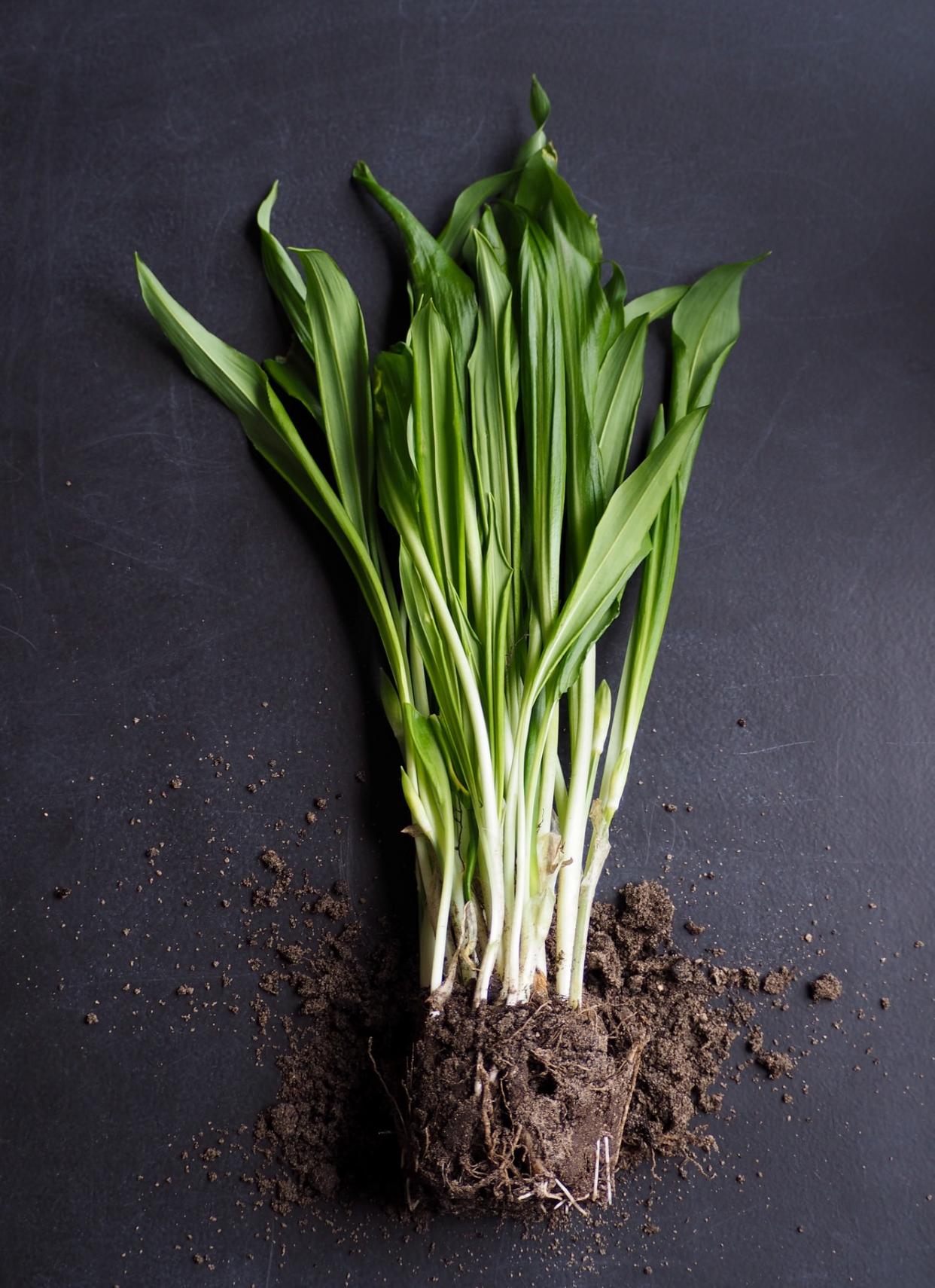
4-First early peas
Sow first early peas like ‘Meteor’ and ‘Kelvedon Wonder’ in autumn to overwinter, providing harvests in early spring. Protect the peas from slugs,
birds and mice by growing in covered containers.

5-Chillies
Chilli peppers, such as ‘Apache’ and ‘Medusa’ can be sown anytime of year, to be grown indoors on the windowsill. In November, when the days are shorter, you’ll want to provide them with warmth, and the brightest spot possible.

Discover five vegetable seeds to sow in November, below. They will reward you with an early harvest the following year.
1-Broad beans
It’s a good idea to buy some Broad bean seeds. Broad beans can be sown in the ground in autumn or alternatively in pots.

2-Salad leaves
Salad leaves like mizuna, mustard and spinach are an easy win. Try sowing indoors on a bright windowsill for winter pickings.

3-Spring onion ‘Performer’
Hardier varieties of spring onion, such as ‘Performer’, can be sown in autumn for winter and spring harvests. It does well in pots, making protecting the young plants easier, too. Protect in a greenhouse or with cloches.

4-First early peas
Sow first early peas like ‘Meteor’ and ‘Kelvedon Wonder’ in autumn to overwinter, providing harvests in early spring. Protect the peas from slugs,
birds and mice by growing in covered containers.

5-Chillies
Chilli peppers, such as ‘Apache’ and ‘Medusa’ can be sown anytime of year, to be grown indoors on the windowsill. In November, when the days are shorter, you’ll want to provide them with warmth, and the brightest spot possible.

0
0
文章
莹723
2020年10月21日

When it comes to Halloween decorations, nothing is better than a collection of DIY jack-o'-lanterns. You can use them to decorate your porch to greet trick-or-treaters or light up your windowsills every night.This Halloween, rather than the classic ghoulish grin and eyes, think about these creative pumpkin faces ideas.
Dress up your farmhouse with pumpkins designed with the help of a few easy-to-find craft supplies. We will get you covered with pumpkin faces that'll outshine all the others in the neighborhood.
1. Owl Pumpkin
Look to nature for many of the materials needed to craft this wise fella.
Make the pumpkin: Hot-glue two white (lumina) pumpkins together to create the head and body. For each eye, cut out a small brown felt circle, then glue a slightly smaller yellow button on top, followed by an even smaller brown button. Hot-glue eyes to top pumpkin. Create loops from a thin twig and tie in place with wax twine to create eye-glasses shape. Hot-glue fir sprigs to glasses to create eyebrows. Spray-paint two oak leaves and a baby pinecone a similar color to pumpkin. Hot-glue leaves to pumpkin to create wings and pinecone to create a nose. Make a bow tie from plaid ribbon. Hot-glue to pumpkin.

2. Rickrack Pumpkin Face
No carving necessary to create this sweet pumpkin face.
Make the pumpkin: Lightly draw a simple pumpkin face on a pumpkin. Use lengths of black rickrack to cover the drawing, attaching it with hot-glue. Attach small white buttons to the corner of each eye with hot-glue. Cut pumpkin-shaped leaves from green felt and lengths of green rickrack to create tendrils; attach at the base of the pumpkin stem with hot-glue.

3. Bunny Pumpkin Face
Every-bunny will love seeing this adorable decoration.
Make the pumpkin: Use ears and top nose templates to trace on gray felt and cut out. Trace the separate nose on pink felt and cut out, sizing accordingly. Hot-glue the pink nose on the center of a white pumpkin. Using craft glue, attach twigs from wheat stalks to the back of the gray nose top. Glue on top of the pink button, overlapping slightly. Outline the bottom of the nose with brown twine and attach with hot glue. Attach the ears and acorn tops for eyes with hot glue.

4.Deer Pumpkin Face
Thanks to yarn-wrapped tree branches, this woodland decoration looks just like the real deal.
Make the pumpkin: Use a plain white pumpkin (like Lumina) as the base. Assemble tree branches and tightly wrap assorted colors of yarn in color block patterns. Secure loose yarn ends with hot-glue. To attach the antlers, drill two holes into the upper third of the pumpkin, keeping the drill bit angled down so antlers stick up, not out. Attach button eyes, a triangle felt nose, and pinched felt triangle ears with hot-glue.

5. Friendly Fox Pumpkin
Stand the variegated squash straight up. Break five skewers in half and stick them into the back of the squash where the tail should sit, leaving 2" exposed. Press the bell-shaped orange gourd into the skewers at the back of the squash to secure as the tail.
Break four skewers in half and press them into the top of the squash body, leaving 2" exposed. Position a small pumpkin so the stem is centered where the nose should sit and push down on the skewers to secure. With the tip of the craft knife, etch out a thin smile by scraping away just the top layer of rind. To create eye sockets, etch slightly deeper holes. Remove the caps of two large acorns. Flip each cap curved-side out and press into the sockets.
Remove the caps of slightly smaller acorns. Apply a dot of hot glue to each acorn and affix to the eye socket caps as pupils. Using the craft knife, cut the small pumpkin into quarters (slice in half horizontally, then in half vertically), scraping away any excess flesh with the spoon.
Rinse and clean a handful of seeds. Pat dry and set aside. Cut pointy ears from two of the pumpkin quarters and press into the pumpkin head with a skewer (break, as needed), allowing the fleshy side to face forward. Turn the remaining pumpkin quarters face down and use the hot glue to affix three pumpkin seeds to each to resemble claws. Secure to the body with skewers (break, as needed).
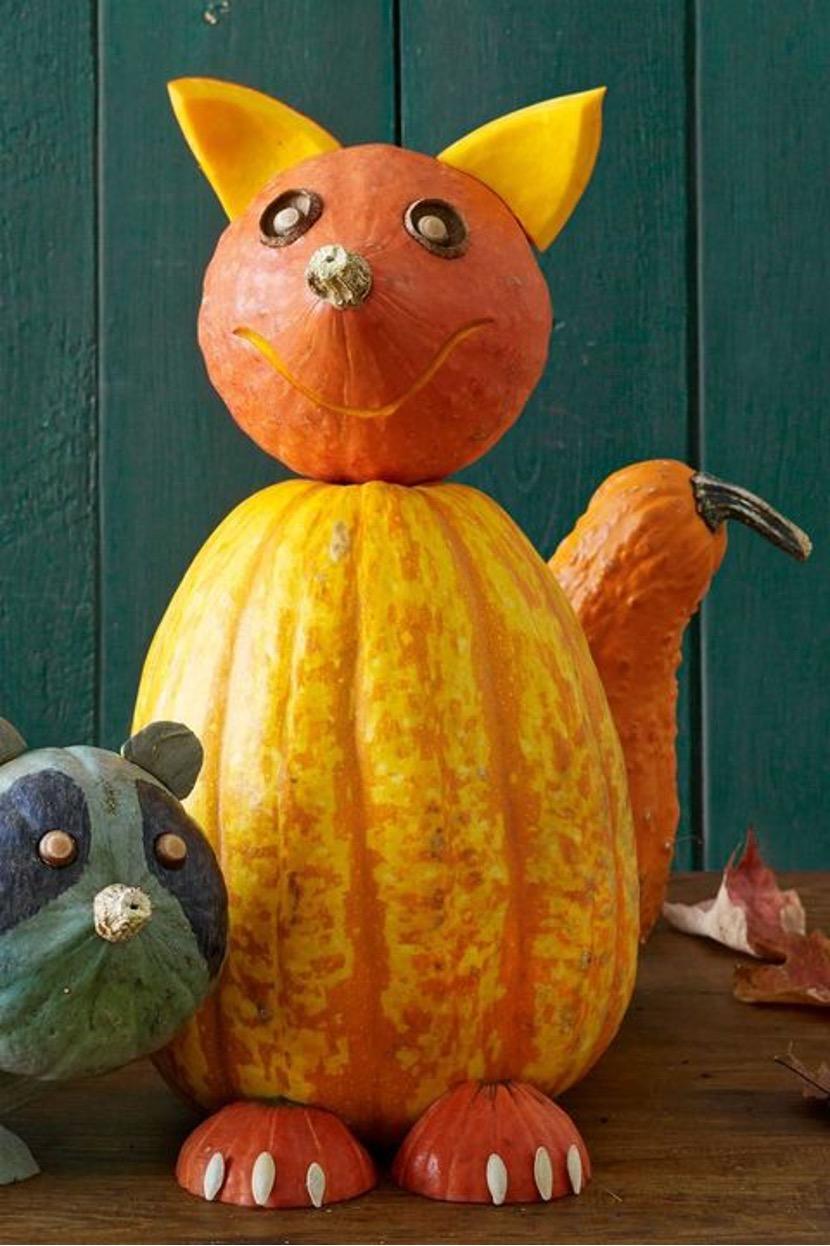
6. Pineapple Pumpkin Faces
We can't imagine a more perfect jack-o'-lantern idea for anyone living in a warmer area—though this totally works on the East Coast as well! A simple pair of sunglasses is all you need.

7. Mr. and Mrs. Pumpkin Faces
Pair off your pumpkins with quirky his and hers looks—which, might also bear hilarious resemblance to Mr. and Mrs. Potato Head. They'll work perfectly with your imaginative DIY costumes.

8. No-Carve Pumpkin People Faces
Use your family and friends as inspiration to create a gaggle of pumpkin faces!

TRY YOURSELF NOW~!
Dress up your farmhouse with pumpkins designed with the help of a few easy-to-find craft supplies. We will get you covered with pumpkin faces that'll outshine all the others in the neighborhood.
1. Owl Pumpkin
Look to nature for many of the materials needed to craft this wise fella.
Make the pumpkin: Hot-glue two white (lumina) pumpkins together to create the head and body. For each eye, cut out a small brown felt circle, then glue a slightly smaller yellow button on top, followed by an even smaller brown button. Hot-glue eyes to top pumpkin. Create loops from a thin twig and tie in place with wax twine to create eye-glasses shape. Hot-glue fir sprigs to glasses to create eyebrows. Spray-paint two oak leaves and a baby pinecone a similar color to pumpkin. Hot-glue leaves to pumpkin to create wings and pinecone to create a nose. Make a bow tie from plaid ribbon. Hot-glue to pumpkin.

2. Rickrack Pumpkin Face
No carving necessary to create this sweet pumpkin face.
Make the pumpkin: Lightly draw a simple pumpkin face on a pumpkin. Use lengths of black rickrack to cover the drawing, attaching it with hot-glue. Attach small white buttons to the corner of each eye with hot-glue. Cut pumpkin-shaped leaves from green felt and lengths of green rickrack to create tendrils; attach at the base of the pumpkin stem with hot-glue.

3. Bunny Pumpkin Face
Every-bunny will love seeing this adorable decoration.
Make the pumpkin: Use ears and top nose templates to trace on gray felt and cut out. Trace the separate nose on pink felt and cut out, sizing accordingly. Hot-glue the pink nose on the center of a white pumpkin. Using craft glue, attach twigs from wheat stalks to the back of the gray nose top. Glue on top of the pink button, overlapping slightly. Outline the bottom of the nose with brown twine and attach with hot glue. Attach the ears and acorn tops for eyes with hot glue.

4.Deer Pumpkin Face
Thanks to yarn-wrapped tree branches, this woodland decoration looks just like the real deal.
Make the pumpkin: Use a plain white pumpkin (like Lumina) as the base. Assemble tree branches and tightly wrap assorted colors of yarn in color block patterns. Secure loose yarn ends with hot-glue. To attach the antlers, drill two holes into the upper third of the pumpkin, keeping the drill bit angled down so antlers stick up, not out. Attach button eyes, a triangle felt nose, and pinched felt triangle ears with hot-glue.

5. Friendly Fox Pumpkin
Stand the variegated squash straight up. Break five skewers in half and stick them into the back of the squash where the tail should sit, leaving 2" exposed. Press the bell-shaped orange gourd into the skewers at the back of the squash to secure as the tail.
Break four skewers in half and press them into the top of the squash body, leaving 2" exposed. Position a small pumpkin so the stem is centered where the nose should sit and push down on the skewers to secure. With the tip of the craft knife, etch out a thin smile by scraping away just the top layer of rind. To create eye sockets, etch slightly deeper holes. Remove the caps of two large acorns. Flip each cap curved-side out and press into the sockets.
Remove the caps of slightly smaller acorns. Apply a dot of hot glue to each acorn and affix to the eye socket caps as pupils. Using the craft knife, cut the small pumpkin into quarters (slice in half horizontally, then in half vertically), scraping away any excess flesh with the spoon.
Rinse and clean a handful of seeds. Pat dry and set aside. Cut pointy ears from two of the pumpkin quarters and press into the pumpkin head with a skewer (break, as needed), allowing the fleshy side to face forward. Turn the remaining pumpkin quarters face down and use the hot glue to affix three pumpkin seeds to each to resemble claws. Secure to the body with skewers (break, as needed).

6. Pineapple Pumpkin Faces
We can't imagine a more perfect jack-o'-lantern idea for anyone living in a warmer area—though this totally works on the East Coast as well! A simple pair of sunglasses is all you need.

7. Mr. and Mrs. Pumpkin Faces
Pair off your pumpkins with quirky his and hers looks—which, might also bear hilarious resemblance to Mr. and Mrs. Potato Head. They'll work perfectly with your imaginative DIY costumes.

8. No-Carve Pumpkin People Faces
Use your family and friends as inspiration to create a gaggle of pumpkin faces!

TRY YOURSELF NOW~!
0
0
文章
莹723
2020年10月16日

Sowing cyclamen from seed is very easy, but it’s not a quick job– it can take a year or more before you see beautiful blooms.
To produce indoor cyclamen plants you need to use seeds of tender large-flowered varieties with wonderful colours.
Learn how to sow cyclamen seeds, below.
You Will Need
•Cyclamen seed
•10cm pot
•Seed compost
•Vermiculite
•Sheet of glass
•Black polythene
Step 1
Before sowing, soak the cyclamen seeds in warm water for at least 12 hours, to soften the seed coat, then rinse. Sow seeds into pots of compost, spacing them evenly.

Step 2
Sprinkle a layer of fine vermiculite or compost over the seeds until the surface is covered completely.

Step 3
Water, then cover with a sheet of glass and a layer of black polythene to shut out the light and encourage germination. Keep temperature lower than 16° – 21°.
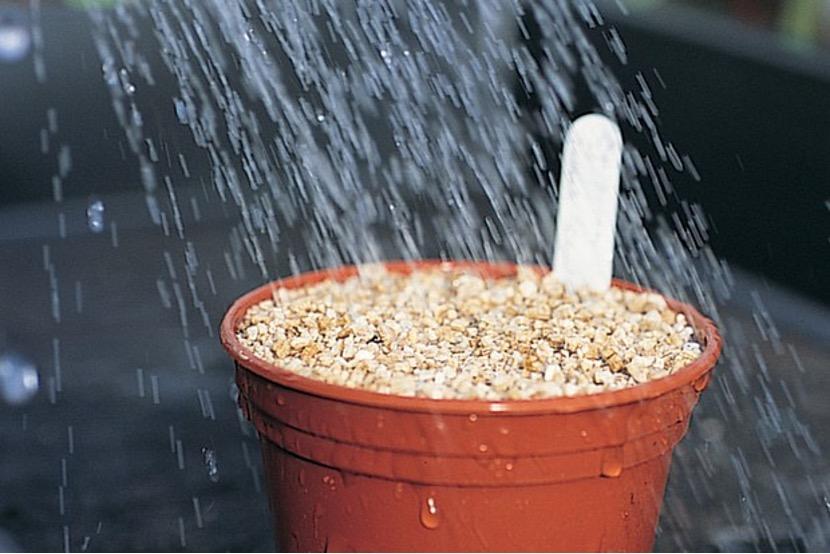
Step 4
Check pot regularly. Germination can take 30 – 60 days, and once the seedlings appear, remove the covering and pop your pot into a bright position.

Step 5
Leaves develop from a tiny tuber, and once two or three leaves have formed the plants can be potted up separately.

Step 6
Plant individually into 7.5cm pots of multi-purpose compost, keeping the tiny tuber level with the surface of the compost.

Step 7
Pot on into larger containers as your plants grow, watering them regularly and feeding them once a week. Most varieties should begin flowering about nine months after sowing. Keep them in a cool spot.

Remove faded flowers or yellowing leaves by twisting stems and giving them a firm tug.
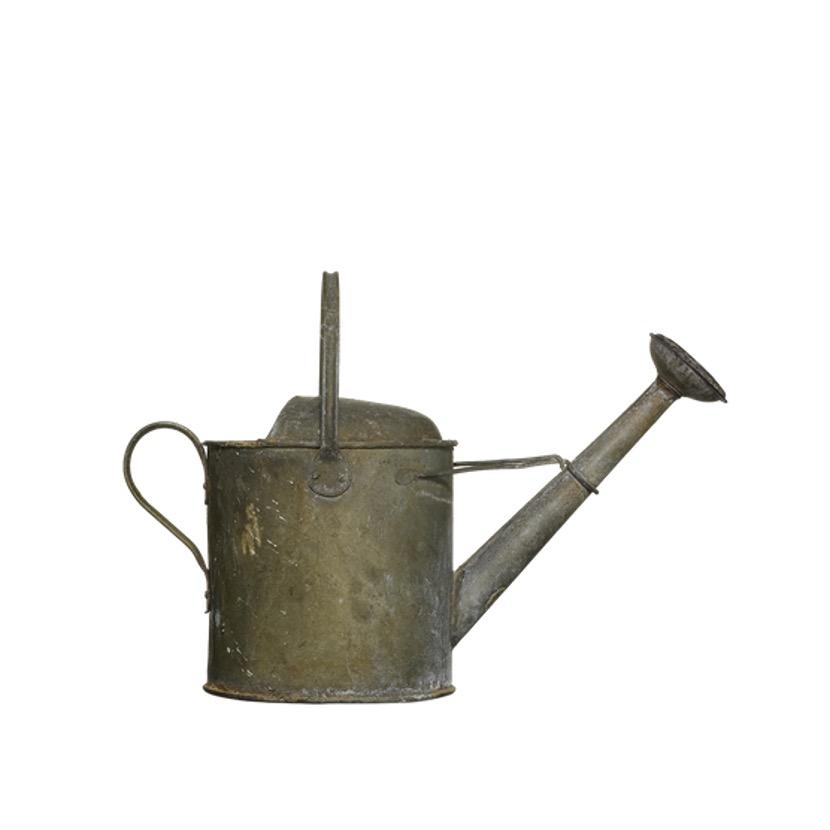
To produce indoor cyclamen plants you need to use seeds of tender large-flowered varieties with wonderful colours.
Learn how to sow cyclamen seeds, below.
You Will Need
•Cyclamen seed
•10cm pot
•Seed compost
•Vermiculite
•Sheet of glass
•Black polythene
Step 1
Before sowing, soak the cyclamen seeds in warm water for at least 12 hours, to soften the seed coat, then rinse. Sow seeds into pots of compost, spacing them evenly.

Step 2
Sprinkle a layer of fine vermiculite or compost over the seeds until the surface is covered completely.

Step 3
Water, then cover with a sheet of glass and a layer of black polythene to shut out the light and encourage germination. Keep temperature lower than 16° – 21°.

Step 4
Check pot regularly. Germination can take 30 – 60 days, and once the seedlings appear, remove the covering and pop your pot into a bright position.

Step 5
Leaves develop from a tiny tuber, and once two or three leaves have formed the plants can be potted up separately.

Step 6
Plant individually into 7.5cm pots of multi-purpose compost, keeping the tiny tuber level with the surface of the compost.

Step 7
Pot on into larger containers as your plants grow, watering them regularly and feeding them once a week. Most varieties should begin flowering about nine months after sowing. Keep them in a cool spot.

Remove faded flowers or yellowing leaves by twisting stems and giving them a firm tug.

0
0
文章
莹723
2020年09月06日

1. Decide what type of garden to grow. What purpose do you want your garden to serve? Some gardens are functional and produce fruit and vegetables you can use to feed your family or give away to neighbors. Others are more ornamental in purpose, serving to beautify your property and provide a pleasing sight to people passing by. If you're not sure what type of garden you want, consider the following options:
- Vegetable gardens can include peppers, tomatoes, cabbages and lettuces, potatoes, squash, carrots, and many other vegetables. If vegetables can grow in your climate, you can find a way to grow them in your yard.
-In flower gardens, different types of flowers may be strategically planted so that something is in bloom almost all year long. Some flower gardens are structured with plantings in neat rows and patterns; others are wilder in appearance. Your personal style and yard size will determine what type of flower garden you might plant.
-Herb gardens often complement both flower and vegetable gardens, since they tend to bloom beautifully while serving the functional purpose of adding flavor to your food. Herb gardens might include rosemary, thyme, dill, cilantro and a variety of other herbs you may want to use to make dried spices and teas.
-In general, vegetable gardens require fertile soil and regular maintenance. Flowers and herbs can tolerate more neglect and poorer soil.
2. Decide what specific plants to include in your garden. Find out what grows well in your area by using this zone finder to determine what zone you are in. Then research which plants do well in your region. As you find out more about your options, make a list of the plants you want to buy and the best time of year to plant them.
- Some plants don't grow well in certain zones. If you live in a place with mild winters and hot summers, you may have trouble growing plants that require a cold snap to grow properly.
- Unless you plan to make your garden relatively large, try to choose varieties that need similar growing conditions. Do they need the same soil type and sun exposure? If not, you may have to create a garden with several types of growing conditions, which can be challenging in a small garden.
- Visit a farmers market or plant sale in the spring. Often you can learn useful information from vendors and buy healthy plants that grow well in your area.

3. Choose a spot for your garden. Take a look around your yard to decide where you want the garden to be. The location you choose should help the garden serve its purpose while producing strong, healthy plants.
- No matter what type of garden you're planting, most plants will grow better in rich, well-drained soil. Avoid spots in your yard where water seems to stand for awhile after a heavy rain, as this could indicate the soil there is too soggy or clay-based for healthy plant growth.
- Most vegetables grow best with a lot of sunlight, so if you're planting a vegetable garden, choose a spot that isn't shaded by trees, fences or buildings. Flowers are more versatile, and if you'd like a flower plot next to your house, you can choose flowers that grow best in partial or full shade.
- If your soil isn't especially fertile, you can make a raised bed or beds and grow flowers or vegetables there. Raised beds are planting beds that are built on top of the ground within wooden frames that are filled with enriched soil.
- If you don't have a yard, you can still have a garden. Plant flowers, herbs and certain vegetables in large pots on your patio. You can move them around according to the amount of sun the plants need.
4. Make a garden design. Draw an outline of your garden or yard space. Map out different options where you want to plant various items in the location you chose. Tailor the design to fit the needs of your plants, making sure the ones that need shade will be planted in a shady spot and the ones that need full sun are in an area that isn't shaded during the day.
- Take into account the space each mature plant will need. Make sure everything you want to plant will fit in your garden and have enough space to spread out while leaving you room to move around between rows or beds.
- Take timing into account. Planting dates vary with climate zones. If you live in a region with mild winters and hot summers, for example, you'll be able to plant earlier in the year than you would if you lived in a region with cold winters and shorter summers.
- If you're planting a vegetable garden, design it so that it's convenient for you to walk into the garden and harvest vegetables as they ripen. You may want to make a path through the garden for this purpose.
- Flower gardens should be designed with aesthetics in mind. Choose colors that look pretty together, and make patterns that are pleasing to the eye. As you plan keep in mind when different varieties will begin to bloom.
Take your lifestyle into account. Do you have children or pets who might run through the area? Is the garden within reach of your water hose? Is it too close to or too far from your home?

- Vegetable gardens can include peppers, tomatoes, cabbages and lettuces, potatoes, squash, carrots, and many other vegetables. If vegetables can grow in your climate, you can find a way to grow them in your yard.
-In flower gardens, different types of flowers may be strategically planted so that something is in bloom almost all year long. Some flower gardens are structured with plantings in neat rows and patterns; others are wilder in appearance. Your personal style and yard size will determine what type of flower garden you might plant.
-Herb gardens often complement both flower and vegetable gardens, since they tend to bloom beautifully while serving the functional purpose of adding flavor to your food. Herb gardens might include rosemary, thyme, dill, cilantro and a variety of other herbs you may want to use to make dried spices and teas.
-In general, vegetable gardens require fertile soil and regular maintenance. Flowers and herbs can tolerate more neglect and poorer soil.
2. Decide what specific plants to include in your garden. Find out what grows well in your area by using this zone finder to determine what zone you are in. Then research which plants do well in your region. As you find out more about your options, make a list of the plants you want to buy and the best time of year to plant them.
- Some plants don't grow well in certain zones. If you live in a place with mild winters and hot summers, you may have trouble growing plants that require a cold snap to grow properly.
- Unless you plan to make your garden relatively large, try to choose varieties that need similar growing conditions. Do they need the same soil type and sun exposure? If not, you may have to create a garden with several types of growing conditions, which can be challenging in a small garden.
- Visit a farmers market or plant sale in the spring. Often you can learn useful information from vendors and buy healthy plants that grow well in your area.

3. Choose a spot for your garden. Take a look around your yard to decide where you want the garden to be. The location you choose should help the garden serve its purpose while producing strong, healthy plants.
- No matter what type of garden you're planting, most plants will grow better in rich, well-drained soil. Avoid spots in your yard where water seems to stand for awhile after a heavy rain, as this could indicate the soil there is too soggy or clay-based for healthy plant growth.
- Most vegetables grow best with a lot of sunlight, so if you're planting a vegetable garden, choose a spot that isn't shaded by trees, fences or buildings. Flowers are more versatile, and if you'd like a flower plot next to your house, you can choose flowers that grow best in partial or full shade.
- If your soil isn't especially fertile, you can make a raised bed or beds and grow flowers or vegetables there. Raised beds are planting beds that are built on top of the ground within wooden frames that are filled with enriched soil.
- If you don't have a yard, you can still have a garden. Plant flowers, herbs and certain vegetables in large pots on your patio. You can move them around according to the amount of sun the plants need.
4. Make a garden design. Draw an outline of your garden or yard space. Map out different options where you want to plant various items in the location you chose. Tailor the design to fit the needs of your plants, making sure the ones that need shade will be planted in a shady spot and the ones that need full sun are in an area that isn't shaded during the day.
- Take into account the space each mature plant will need. Make sure everything you want to plant will fit in your garden and have enough space to spread out while leaving you room to move around between rows or beds.
- Take timing into account. Planting dates vary with climate zones. If you live in a region with mild winters and hot summers, for example, you'll be able to plant earlier in the year than you would if you lived in a region with cold winters and shorter summers.
- If you're planting a vegetable garden, design it so that it's convenient for you to walk into the garden and harvest vegetables as they ripen. You may want to make a path through the garden for this purpose.
- Flower gardens should be designed with aesthetics in mind. Choose colors that look pretty together, and make patterns that are pleasing to the eye. As you plan keep in mind when different varieties will begin to bloom.
Take your lifestyle into account. Do you have children or pets who might run through the area? Is the garden within reach of your water hose? Is it too close to or too far from your home?

0
0
文章
ritau
2020年08月25日

1. Spray the plants with a strong stream of water. Use a hose to spray the plants affected by aphids with cold water—this should knock the aphids right off. A hard rainstorm can also wash the aphids off of the plant.
- While you want there to be water pressure, make sure you don’t damage the plants by setting the pressure too high.
- Repeat as needed to remove aphids when they crop up.
2. Remove the aphids using your hands. If you see a cluster of aphids on a plant, you can swipe them off using your fingers. When you brush the aphids off, drop them into a soapy bucket of water to kill them.
- If the aphids have infested an entire leaf or stem, snip off the section using scissors or pruning shears and drop it in the soapy bucket of water.
- Wear gloves to protect your hands.
3. Dust the plants with flour to help deal with an aphid invasion. Take a cupful of flour from your pantry or kitchen and bring it out to your garden. Use your hands to evenly sprinkle the plants affected by aphids, giving them a fine layer of flour.
- You don't have to coat the entire plant in flour, just the spot where the aphids are gathering.
- Ingesting the flour will constipate the aphids.
4. Wipe the plants down with a mild soap and water. Mix together a few drops of a mild dish detergent with a cup of water. Dip a rag or paper towel into the mixture, using it to gently wipe down the stem and leaves of the plant affected by the aphids.
- Make sure you wipe both sides of the leaves.

5. Mix together essential oils to use on the plants. Combine peppermint, rosemary, thyme, and clove oils in a bowl or cup, using 4-5 drops of each one. Pour the mixture into a spray bottle with water in it before shaking it all together. Spray the water and oil mixture onto plants that aphids have been eating.
- Designate 1 spray bottle as your essential oil sprayer. The oils tend to perfume and permeate the plastic, making them less than ideal for other uses going forward.
6. Create a homemade garlic spray to use on the aphids. Do this by chopping up 3-4 cloves of garlic before mixing them with 2 teaspoons (9.9 ml) of mineral oil. Leave the mixture alone for 24 hours before straining out the garlic chunks. Pour the mixture into a spray bottle with 16 ounces (450 g) of regular water and 1 teaspoon (4.9 ml) of dish soap before spraying the garlic concoction onto the plants.
- You can also make a tomato leaf spray to use on the plants.
7. Spray neem oil onto plants affected by aphids. By mixing neem oil with a little bit of water, you’ll create an organic concoction that helps repel aphids. Pour the water and neem oil into a spray bottle and apply it to sections of the plant that are affected by aphids.
- Find neem oil at a home and garden store, some big box stores, or online. Note that neem oil will perfume any sprayers for a long time. It’s best to designate a particular bottle for this use.
- You can also use horticultural oil to spray onto the plants.

8. Enlist an insecticidal soap to help control aphids. These soaps can be bought from a gardening supplier or online. Read the instructions to find out how much of the soap to mix with water before spraying it on the plants to help fend off aphids.
- These soaps are designed to kill the aphids.
- Insecticidal soaps are less toxic to mammals (humans and pets) than chemical insecticides. That said, follow the manufacturer’s directions about any safety precautions or gear you should wear when using them.
- While you want there to be water pressure, make sure you don’t damage the plants by setting the pressure too high.
- Repeat as needed to remove aphids when they crop up.
2. Remove the aphids using your hands. If you see a cluster of aphids on a plant, you can swipe them off using your fingers. When you brush the aphids off, drop them into a soapy bucket of water to kill them.
- If the aphids have infested an entire leaf or stem, snip off the section using scissors or pruning shears and drop it in the soapy bucket of water.
- Wear gloves to protect your hands.
3. Dust the plants with flour to help deal with an aphid invasion. Take a cupful of flour from your pantry or kitchen and bring it out to your garden. Use your hands to evenly sprinkle the plants affected by aphids, giving them a fine layer of flour.
- You don't have to coat the entire plant in flour, just the spot where the aphids are gathering.
- Ingesting the flour will constipate the aphids.
4. Wipe the plants down with a mild soap and water. Mix together a few drops of a mild dish detergent with a cup of water. Dip a rag or paper towel into the mixture, using it to gently wipe down the stem and leaves of the plant affected by the aphids.
- Make sure you wipe both sides of the leaves.

5. Mix together essential oils to use on the plants. Combine peppermint, rosemary, thyme, and clove oils in a bowl or cup, using 4-5 drops of each one. Pour the mixture into a spray bottle with water in it before shaking it all together. Spray the water and oil mixture onto plants that aphids have been eating.
- Designate 1 spray bottle as your essential oil sprayer. The oils tend to perfume and permeate the plastic, making them less than ideal for other uses going forward.
6. Create a homemade garlic spray to use on the aphids. Do this by chopping up 3-4 cloves of garlic before mixing them with 2 teaspoons (9.9 ml) of mineral oil. Leave the mixture alone for 24 hours before straining out the garlic chunks. Pour the mixture into a spray bottle with 16 ounces (450 g) of regular water and 1 teaspoon (4.9 ml) of dish soap before spraying the garlic concoction onto the plants.
- You can also make a tomato leaf spray to use on the plants.
7. Spray neem oil onto plants affected by aphids. By mixing neem oil with a little bit of water, you’ll create an organic concoction that helps repel aphids. Pour the water and neem oil into a spray bottle and apply it to sections of the plant that are affected by aphids.
- Find neem oil at a home and garden store, some big box stores, or online. Note that neem oil will perfume any sprayers for a long time. It’s best to designate a particular bottle for this use.
- You can also use horticultural oil to spray onto the plants.

8. Enlist an insecticidal soap to help control aphids. These soaps can be bought from a gardening supplier or online. Read the instructions to find out how much of the soap to mix with water before spraying it on the plants to help fend off aphids.
- These soaps are designed to kill the aphids.
- Insecticidal soaps are less toxic to mammals (humans and pets) than chemical insecticides. That said, follow the manufacturer’s directions about any safety precautions or gear you should wear when using them.
0
0
文章
ritau
2020年08月09日

1. Purchase whole, untreated mung beans. Do not use beans packaged in gardening packets, which have probably been chemically treated. Check the label to make sure you’re purchasing whole and untreated beans which are made for sprouting and eating.
2. Measure out your desired amount of mung beans. Consider the size of the bowl or jar you plan to soak them in—the beans should fill about ¼ of the container. Mung beans get much bigger once they sprout, so be careful not to use too much.
-The yield for sprouting mung beans is about 2 to 1, meaning if you use 1 pound of seeds you’ll end up with 2 pounds of sprouts.
3. Rinse your mung beans using a colander or strainer. Run clean water over the beans until it runs clear. They may be dusty, since the majority of mung beans are grown in China and are often left to dry on gravel roads.
-This will help protect you from anything which might have been in the soil, like metals and toxins.
-It will also wash away things like mites that may have made their way into the dried beans.
4. Place the beans in a clear, wide-mouth jar. Mason canning jars are a great option, but you can also reuse jars that held peanut butter or pasta sauce, for instance. The beans should fill up about a quarter of your container.
5. Submerge the beans in water and cover the jar with a mesh lid. Fill the jar partway with cool water, roughly 2-3 times the volume of the beans. Then, cover your jar with some type of breathable lid.
-For a homemade option, you can use a piece of cheesecloth secured with rubber band. You could also punch holes into an existing metal or glass lid.
-You could also purchase a specialized sprouting jar, which is sold with a pre-made strainer lid.
-If you don’t have cheesecloth or a mesh lid, you can also soak your beans uncovered in a bowl or jar.
6. Soak the beans for 8-12 hours until they swell up. How long they have to soak will depend on the beans. Generally, larger beans will require a longer soak. You can place the jar on the countertop or in a cabinet—just make sure it’s not positioned in direct sunlight.
-The beans should be soaking at room temperature, not in the fridge.
7. Drain and rinse the beans through the mesh lid. Drain away the excess water through the lid of your jar by flipping it over in the sink. Then, rinse the swollen beans with fresh water and drain it again.
-If you don’t have a mesh lid or cheesecloth, you can also hold a strainer against the opening of your jar to drain the water.

8. Put the jar in a cool, dark place for 12 hours. Find a place that gets little to no sunlight where the beans will not be disturbed. Place the jar upside down and at an angle on a dish rack or cooling rack so the moisture can continue to be released.
-Although the beans should not be exposed to direct sunlight, there’s no need for the storage location to be completely dark. A shadowy corner of your countertop would work well.
9. Repeat this process every 12 hours for 2-5 days. Rinse and drain the beans through the mesh lid approximately every 12 hours (or twice a day). Return them to their dark storage spot after each rinse session.
-The beans should continue to grow in size and sprout thin white tails.
10. Give the sprouts a rinse once they’ve reached your desired length. Pour the sprouted beans into a colander and give them one last rinse before draining them thoroughly. Generally, mung beans taste good when they’re about 1⁄2 in (1.3 cm) long—but it’s mostly a matter of personal preference.
-he green shells may have started to come off the white bean sprouts at this point. You can remove some of these empty shells from the mix with your hands if you like.
11. Spread the sprouted beans across a baking sheet lined in paper towels. Cover a baking sheet with two layers of dry paper towels, then pour the rinsed and drained beans on top. Spread them out in a thin layer with your hand and press gently to absorb any excess water. Once you’ve patted them dry, they are ready to be stored.
-Pick out any unsprouted beans and throw them away.
-To dry the beans even more thoroughly, cover them with another paper towel and press gently.
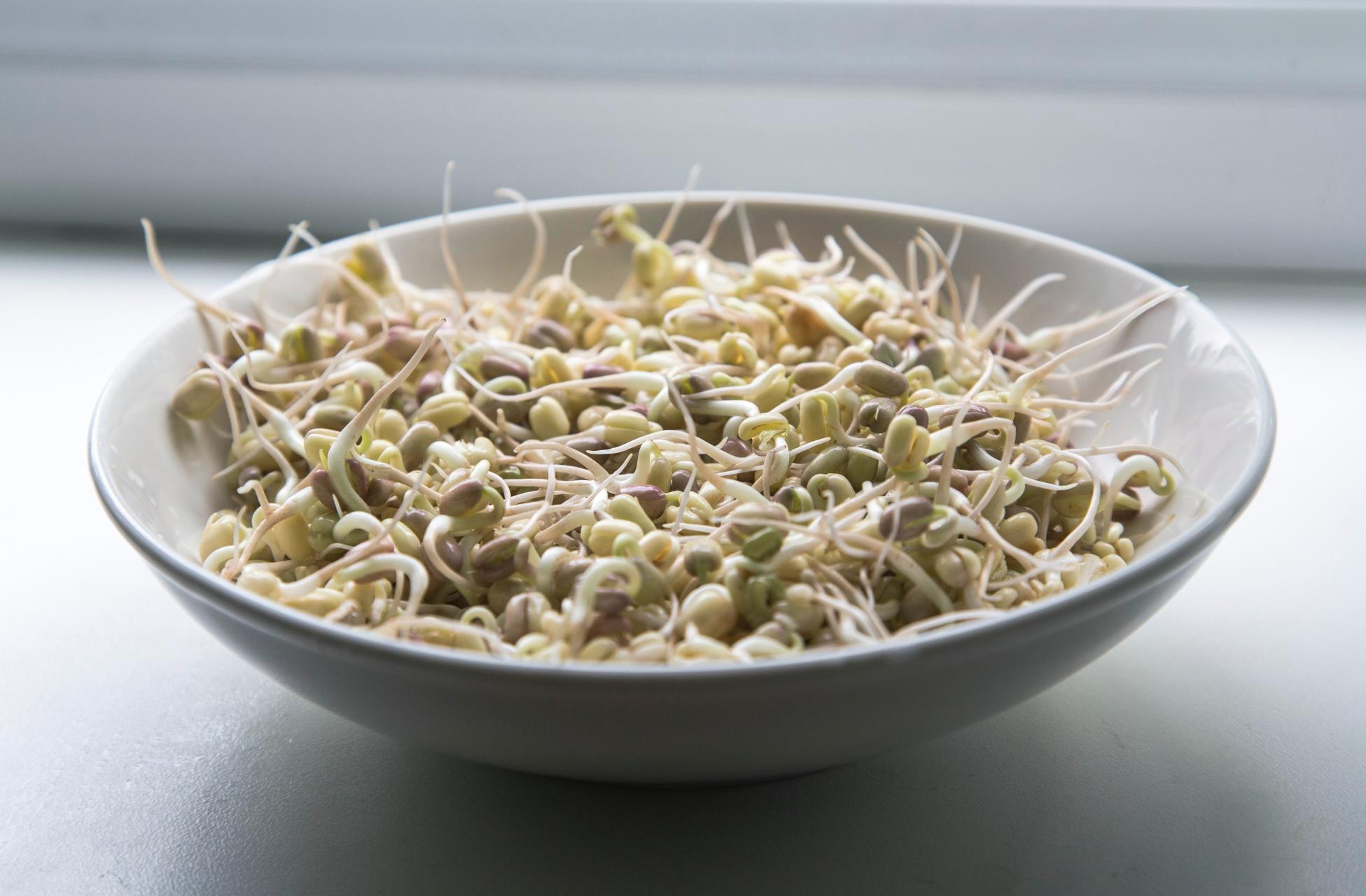
12. Place the sprouts into a bowl and store in the fridge for up to 2 weeks. Line the bowl with paper towels, then use your hands to transfer handfuls of sprouts into the container. Plan to eat the sprouts within 2 weeks.
-Mung bean sprouts are a great base for a chilled salad, or a classic addition to a stir-fry.
2. Measure out your desired amount of mung beans. Consider the size of the bowl or jar you plan to soak them in—the beans should fill about ¼ of the container. Mung beans get much bigger once they sprout, so be careful not to use too much.
-The yield for sprouting mung beans is about 2 to 1, meaning if you use 1 pound of seeds you’ll end up with 2 pounds of sprouts.
3. Rinse your mung beans using a colander or strainer. Run clean water over the beans until it runs clear. They may be dusty, since the majority of mung beans are grown in China and are often left to dry on gravel roads.
-This will help protect you from anything which might have been in the soil, like metals and toxins.
-It will also wash away things like mites that may have made their way into the dried beans.
4. Place the beans in a clear, wide-mouth jar. Mason canning jars are a great option, but you can also reuse jars that held peanut butter or pasta sauce, for instance. The beans should fill up about a quarter of your container.
5. Submerge the beans in water and cover the jar with a mesh lid. Fill the jar partway with cool water, roughly 2-3 times the volume of the beans. Then, cover your jar with some type of breathable lid.
-For a homemade option, you can use a piece of cheesecloth secured with rubber band. You could also punch holes into an existing metal or glass lid.
-You could also purchase a specialized sprouting jar, which is sold with a pre-made strainer lid.
-If you don’t have cheesecloth or a mesh lid, you can also soak your beans uncovered in a bowl or jar.
6. Soak the beans for 8-12 hours until they swell up. How long they have to soak will depend on the beans. Generally, larger beans will require a longer soak. You can place the jar on the countertop or in a cabinet—just make sure it’s not positioned in direct sunlight.
-The beans should be soaking at room temperature, not in the fridge.
7. Drain and rinse the beans through the mesh lid. Drain away the excess water through the lid of your jar by flipping it over in the sink. Then, rinse the swollen beans with fresh water and drain it again.
-If you don’t have a mesh lid or cheesecloth, you can also hold a strainer against the opening of your jar to drain the water.

8. Put the jar in a cool, dark place for 12 hours. Find a place that gets little to no sunlight where the beans will not be disturbed. Place the jar upside down and at an angle on a dish rack or cooling rack so the moisture can continue to be released.
-Although the beans should not be exposed to direct sunlight, there’s no need for the storage location to be completely dark. A shadowy corner of your countertop would work well.
9. Repeat this process every 12 hours for 2-5 days. Rinse and drain the beans through the mesh lid approximately every 12 hours (or twice a day). Return them to their dark storage spot after each rinse session.
-The beans should continue to grow in size and sprout thin white tails.
10. Give the sprouts a rinse once they’ve reached your desired length. Pour the sprouted beans into a colander and give them one last rinse before draining them thoroughly. Generally, mung beans taste good when they’re about 1⁄2 in (1.3 cm) long—but it’s mostly a matter of personal preference.
-he green shells may have started to come off the white bean sprouts at this point. You can remove some of these empty shells from the mix with your hands if you like.
11. Spread the sprouted beans across a baking sheet lined in paper towels. Cover a baking sheet with two layers of dry paper towels, then pour the rinsed and drained beans on top. Spread them out in a thin layer with your hand and press gently to absorb any excess water. Once you’ve patted them dry, they are ready to be stored.
-Pick out any unsprouted beans and throw them away.
-To dry the beans even more thoroughly, cover them with another paper towel and press gently.

12. Place the sprouts into a bowl and store in the fridge for up to 2 weeks. Line the bowl with paper towels, then use your hands to transfer handfuls of sprouts into the container. Plan to eat the sprouts within 2 weeks.
-Mung bean sprouts are a great base for a chilled salad, or a classic addition to a stir-fry.
0
0
文章
ritau
2020年07月27日

1. Obtain coffee grounds. Growing mushrooms from coffee grounds is a fun project which helps to use up coffee grounds that would otherwise go to waste. Coffee grounds are a fantastic growing medium for mushrooms (oyster mushrooms in particular) as they are already sterilized thanks to the coffee brewing process and are full of nutrients.
For 500 g (17.6 oz) of mushroom spawn, you will need 2.5 kg (88 oz) of fresh coffee grounds. The best way to get this amount of fresh coffee grounds (brewed that day) is to go to a cafe and ask nicely. They're usually more than happy to give it away.
2. Find a container for the mushrooms. The best thing to use is a filter patch grow bag, which can usually be purchased along with the mushroom spawn. Otherwise you can use a large, sealable freezer bag or a sterilized milk carton or ice cream tub, with four small holes poked into the sides.
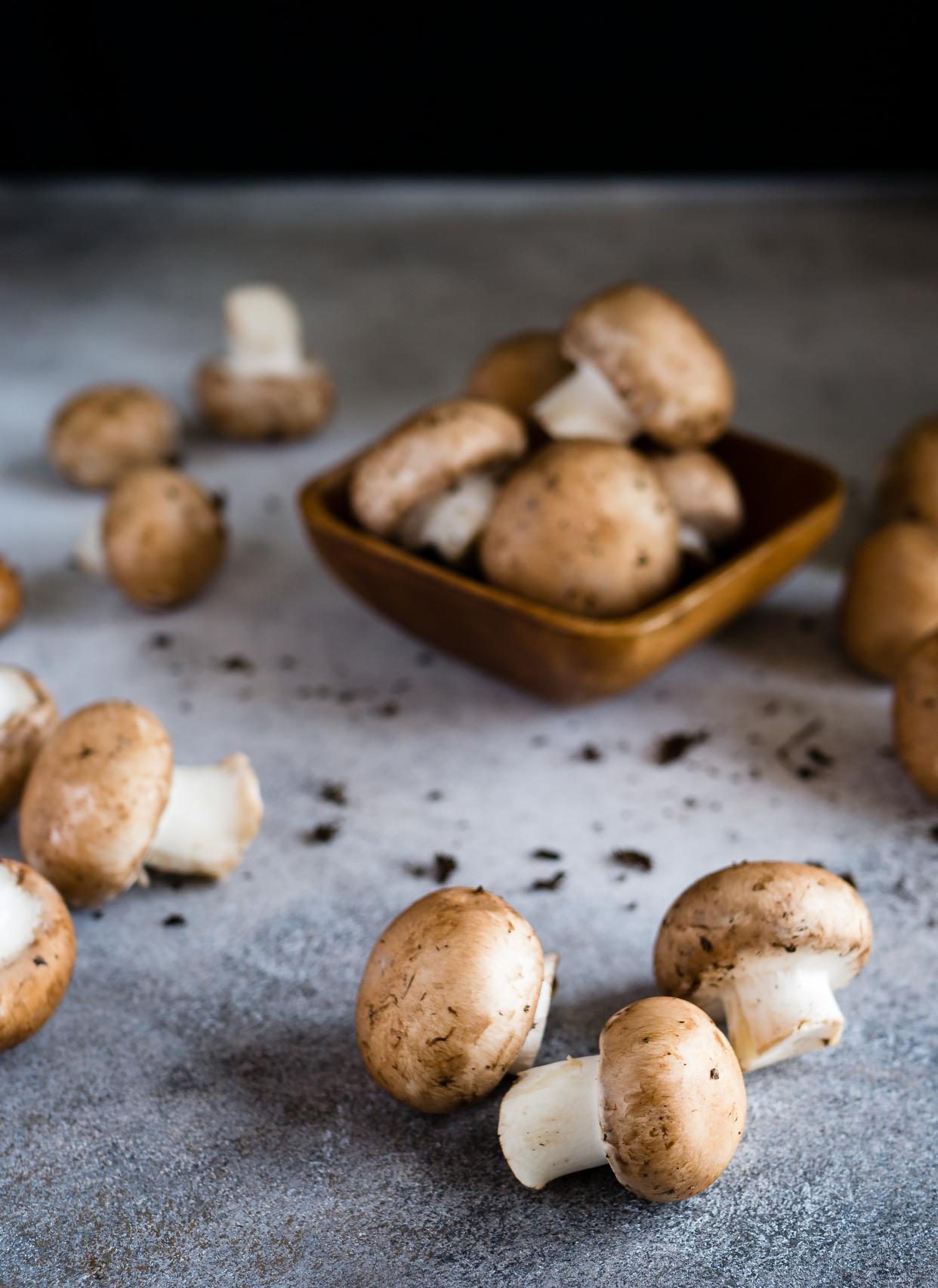
3. Transfer the spawn into the container. Wash your hands thoroughly with anti-bacterial soap, then mix the mushroom spawn into the coffee grounds, breaking them up with your hands to ensure that they are evenly distributed. Place the inoculated coffee grinds into the plastic bag or container and seal tightly.
4. Put the mushrooms in the right environment. Place the bag or container in a warm, dark location, somewhere between 64 and 77°F (18 to 25°C), like in an airing cupboard or under the sink. Leave it here for two to four weeks or until it turns entirely white — this due to the mycelia colonizing the coffee grinds.
-Again, cut out any dark spots of green or brown that develop on the colonizing substrate, as this can make you sick.
5. Relocate the mushrooms. Once the bag or container's contents have turned completely white, move it to a bright area (but not into direct sunlight) and cut a 2" by 2" hole at the top. Mist the contents of the container with water twice daily to prevent it from drying out — the mushrooms won't grow in too-dry conditions.
6. Harvest the mushrooms. Over the next five to seven days, tiny mushrooms will begin to sprout. Continue to mist them with water and they should double in size each day. When the cups of the mushrooms have started to turn slightly upwards, they are ready to harvest.
When the mushrooms have stopped sprouting, plant the coffee grinds outdoors under bark mulch or compost and new mushrooms may develop, depending on the weather.
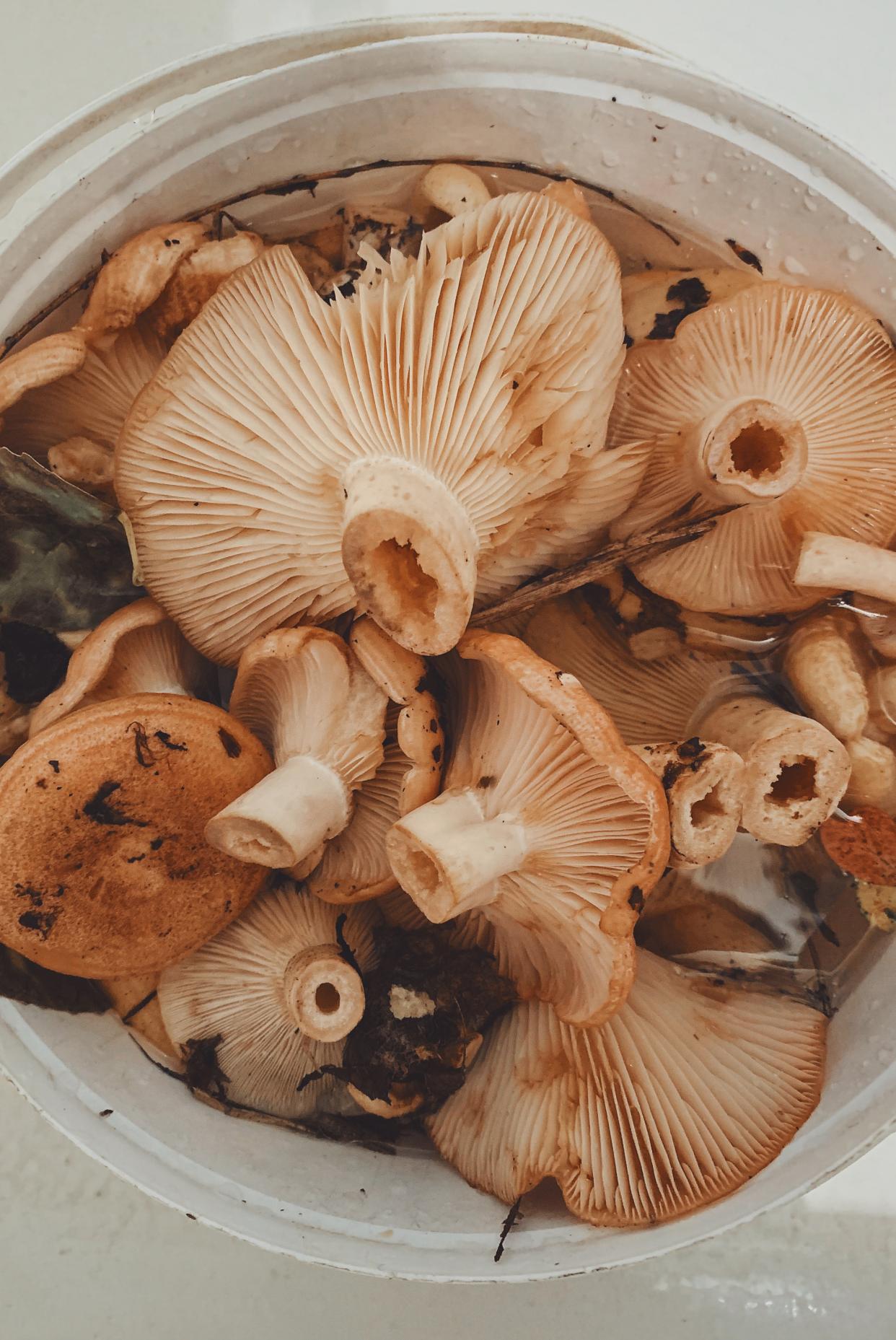
For 500 g (17.6 oz) of mushroom spawn, you will need 2.5 kg (88 oz) of fresh coffee grounds. The best way to get this amount of fresh coffee grounds (brewed that day) is to go to a cafe and ask nicely. They're usually more than happy to give it away.
2. Find a container for the mushrooms. The best thing to use is a filter patch grow bag, which can usually be purchased along with the mushroom spawn. Otherwise you can use a large, sealable freezer bag or a sterilized milk carton or ice cream tub, with four small holes poked into the sides.

3. Transfer the spawn into the container. Wash your hands thoroughly with anti-bacterial soap, then mix the mushroom spawn into the coffee grounds, breaking them up with your hands to ensure that they are evenly distributed. Place the inoculated coffee grinds into the plastic bag or container and seal tightly.
4. Put the mushrooms in the right environment. Place the bag or container in a warm, dark location, somewhere between 64 and 77°F (18 to 25°C), like in an airing cupboard or under the sink. Leave it here for two to four weeks or until it turns entirely white — this due to the mycelia colonizing the coffee grinds.
-Again, cut out any dark spots of green or brown that develop on the colonizing substrate, as this can make you sick.
5. Relocate the mushrooms. Once the bag or container's contents have turned completely white, move it to a bright area (but not into direct sunlight) and cut a 2" by 2" hole at the top. Mist the contents of the container with water twice daily to prevent it from drying out — the mushrooms won't grow in too-dry conditions.
6. Harvest the mushrooms. Over the next five to seven days, tiny mushrooms will begin to sprout. Continue to mist them with water and they should double in size each day. When the cups of the mushrooms have started to turn slightly upwards, they are ready to harvest.
When the mushrooms have stopped sprouting, plant the coffee grinds outdoors under bark mulch or compost and new mushrooms may develop, depending on the weather.

0
0
文章
ritau
2020年06月28日

*Handling an Infestation*
1. Rinse plants that have a minor infestation. If you only notice a few lace bugs per leaf, you might be able to use a hose to get rid of them. Make sure your hose has a strong stream of water, and spray down the plant to wash the bugs away.
2. Spray insecticides onto the bottom of leaves. Lace bugs and their larva often feed on the bottom of leaves, so you will need to spray the insecticide directly onto the undersides of the leaves. Start in late spring when the eggs first hatch, and reapply every ten to fourteen days.
-You can use an insecticidal soap, but make sure you spray the bugs directly with it. Pesticides, such as pyrethrin or neem oil, also work.
-Insecticides will kill nymphs and adults but not eggs.
3. Apply horticultural oil in the fall to kill eggs. The eggs appear as black spots along the veins of the leaf. These cannot be killed with insecticides, but they can be killed with horticultural oil. Spray it along the underside of each leaf in the fall.
4. Apply neonicotinoids to the soil if other methods haven't worked. Neonicotinoids include imidacloprid and dinotefuran. When added to the soil, the plant may absorb the substances, which can keep the plant bug free for a whole season. These typically come as a granule or as a concentration.
If you have a granule version, sprinkle it around the base of the plant. Water the plant afterwards.
If you have a concentration, follow the instructions on the label to mix it with water. Pour it evenly around the base, and water the plant afterwards.
Keep in mind that neonicotinoids may also kill off beneficial bugs.

*Assessing the Damage*
1. Examine the leaves. You only need to treat plants that are currently infested with lace bugs. Lace bugs cause white spots to appear on the leaf. The larger your infestation, the paler your leaves will become. A few white dots may mean a small infestation while leaves that are almost completely white indicate a much larger problem.
-The underside of the leaf may be covered in dark excrement.
-Do this every two weeks, starting in early spring and ending in late summer.
2. Check the undersides of leaves to look for the bugs. There are three different stages of a lace bug’s life. If you can reduce their numbers in early spring while they are still nymphs, you may be able to prevent an infestation in summer.
-Eggs are small, black, and oval. Three generations of eggs can be laid in one year, beginning in spring and ending in fall. Fall eggs will hatch next spring.
-Nymphs are small. They may have black, spotted markings, and they have not developed wings yet. Nymphs can hatch as early as April and as late as September.
-Adults have large wings with a lacy pattern. They may start appearing in early summer.
3. Monitor for early leaf drop. Severe infestations may cause the plant's leaves to drop early. At this point, you should use heavier pesticides to eliminate the lace bugs. New leaves should grow back as long as the infestation is handled.

1. Rinse plants that have a minor infestation. If you only notice a few lace bugs per leaf, you might be able to use a hose to get rid of them. Make sure your hose has a strong stream of water, and spray down the plant to wash the bugs away.
2. Spray insecticides onto the bottom of leaves. Lace bugs and their larva often feed on the bottom of leaves, so you will need to spray the insecticide directly onto the undersides of the leaves. Start in late spring when the eggs first hatch, and reapply every ten to fourteen days.
-You can use an insecticidal soap, but make sure you spray the bugs directly with it. Pesticides, such as pyrethrin or neem oil, also work.
-Insecticides will kill nymphs and adults but not eggs.
3. Apply horticultural oil in the fall to kill eggs. The eggs appear as black spots along the veins of the leaf. These cannot be killed with insecticides, but they can be killed with horticultural oil. Spray it along the underside of each leaf in the fall.
4. Apply neonicotinoids to the soil if other methods haven't worked. Neonicotinoids include imidacloprid and dinotefuran. When added to the soil, the plant may absorb the substances, which can keep the plant bug free for a whole season. These typically come as a granule or as a concentration.
If you have a granule version, sprinkle it around the base of the plant. Water the plant afterwards.
If you have a concentration, follow the instructions on the label to mix it with water. Pour it evenly around the base, and water the plant afterwards.
Keep in mind that neonicotinoids may also kill off beneficial bugs.

*Assessing the Damage*
1. Examine the leaves. You only need to treat plants that are currently infested with lace bugs. Lace bugs cause white spots to appear on the leaf. The larger your infestation, the paler your leaves will become. A few white dots may mean a small infestation while leaves that are almost completely white indicate a much larger problem.
-The underside of the leaf may be covered in dark excrement.
-Do this every two weeks, starting in early spring and ending in late summer.
2. Check the undersides of leaves to look for the bugs. There are three different stages of a lace bug’s life. If you can reduce their numbers in early spring while they are still nymphs, you may be able to prevent an infestation in summer.
-Eggs are small, black, and oval. Three generations of eggs can be laid in one year, beginning in spring and ending in fall. Fall eggs will hatch next spring.
-Nymphs are small. They may have black, spotted markings, and they have not developed wings yet. Nymphs can hatch as early as April and as late as September.
-Adults have large wings with a lacy pattern. They may start appearing in early summer.
3. Monitor for early leaf drop. Severe infestations may cause the plant's leaves to drop early. At this point, you should use heavier pesticides to eliminate the lace bugs. New leaves should grow back as long as the infestation is handled.

0
0
文章
ritau
2020年06月22日

*Removing Dead Leaves, Limbs, and Flowers
1. Use sharp scissors or garden shears. Make sure the scissors or garden shears are very sharp, as dull shears can damage the plants. If you notice any dirt on the shears, soak them in water with a teaspoon of bleach and then wipe them dry. A clean tool will ensure your plants are not exposed to bacteria or pests when you prune them.
-You can find garden shears for pruning online or at your local hardware store.
-If you are worried about scratching your hands while you prune, wear gardening gloves.
2. Prune the plants at the beginning of their growing season. If you have houseplants that do not flower, prune them in late winter. For houseplants with flowers or blooms, wait until they have bloomed before you prune them.
- Do not prune houseplants when unopened buds are present on the stems.
3. Remove dead leaves and limbs at a 45 degree angle. Look for any leaves or limbs on the plant that are brown or discolored. They may also appear limp or dry. Use the shears to cut them off just below the brown or dead area at a 45 degree angle. This will ensure you leave as much of the healthy foliage on the plant as possible.
-Do not cut off any leaves or limbs that still appear green and vibrant.
-If a large section of the leafy area appears dead, you can cut off the entire branch. Leave the main stem intact and remove branches shooting off of the stem at a 45 degree angle.
4. Trim off any dead flowers. If you have houseplants that are flowering, make sure you check them over for any dead flowers and remove them. The flowers may appear brown, discolored, and limp. They may also feel dry to the touch. Cut the dead flowers off with the shears at the base of the flower’s head.
-Removing dead and dying flowers on the plant will encourage the growth of newer, more vibrant blooms.
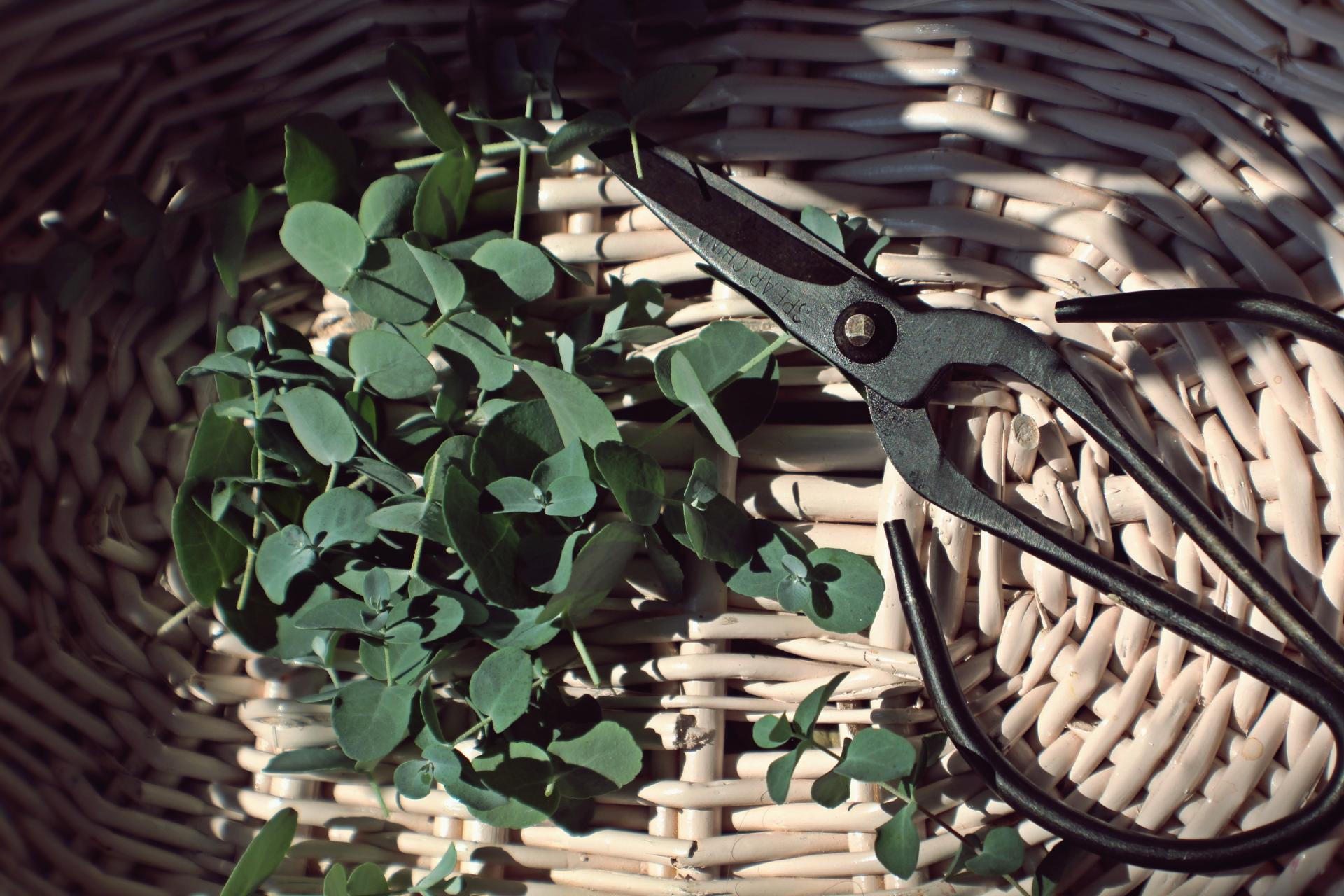
*Cutting Back Overgrown Branches and Stems
1. Prune back half of the longest branches on the plant. Use the shears to cut them back about a third of their length. Trim the branches off at a 45 degree angle.
-If there are any side shoots on the branches further down the base of the plant, you can prune a few of these shoots.
-Do not cut off any nodules on the plants as you prune, which are new buds that have not bloomed or opened yet.
2.Remove leggy stems. Check the plant for any stems that are unusually long. They may appear loose or straggling, falling off different areas of the plant. Pruning leggy stems will help the plant to grow in a fuller, more even pattern. Use the shears to cut the leggy stems back to one third their length, cutting at a 45 degree angle.
3. Pinch off the stems. If you have soft-stemmed houseplants like coleus, heartleaf philodendron, and English ivy, make sure you pinch them regularly. Use your thumb and forefinger to remove the tip of a stem. Pinch above the node, which is the growing point where the leaf is attached to the plant.
- Pinching off the stems can help maintain the bushy shape of the plant and encourage even growth. It also helps to prevent the growth of leggy stems.

4. Remove 10-20% of the plant’s foliage at a time. Do not over prune the plant, as this can make it difficult for it to grow properly. Make selective cuts to the plant, removing only 10-20% of the foliage at a time. Wait a few weeks to one month to prune the plants again.
-Always leave some foliage on the plant when you prune. If you are in doubt, under prune the plant and then reevaluate it a few weeks later.
1. Use sharp scissors or garden shears. Make sure the scissors or garden shears are very sharp, as dull shears can damage the plants. If you notice any dirt on the shears, soak them in water with a teaspoon of bleach and then wipe them dry. A clean tool will ensure your plants are not exposed to bacteria or pests when you prune them.
-You can find garden shears for pruning online or at your local hardware store.
-If you are worried about scratching your hands while you prune, wear gardening gloves.
2. Prune the plants at the beginning of their growing season. If you have houseplants that do not flower, prune them in late winter. For houseplants with flowers or blooms, wait until they have bloomed before you prune them.
- Do not prune houseplants when unopened buds are present on the stems.
3. Remove dead leaves and limbs at a 45 degree angle. Look for any leaves or limbs on the plant that are brown or discolored. They may also appear limp or dry. Use the shears to cut them off just below the brown or dead area at a 45 degree angle. This will ensure you leave as much of the healthy foliage on the plant as possible.
-Do not cut off any leaves or limbs that still appear green and vibrant.
-If a large section of the leafy area appears dead, you can cut off the entire branch. Leave the main stem intact and remove branches shooting off of the stem at a 45 degree angle.
4. Trim off any dead flowers. If you have houseplants that are flowering, make sure you check them over for any dead flowers and remove them. The flowers may appear brown, discolored, and limp. They may also feel dry to the touch. Cut the dead flowers off with the shears at the base of the flower’s head.
-Removing dead and dying flowers on the plant will encourage the growth of newer, more vibrant blooms.

*Cutting Back Overgrown Branches and Stems
1. Prune back half of the longest branches on the plant. Use the shears to cut them back about a third of their length. Trim the branches off at a 45 degree angle.
-If there are any side shoots on the branches further down the base of the plant, you can prune a few of these shoots.
-Do not cut off any nodules on the plants as you prune, which are new buds that have not bloomed or opened yet.
2.Remove leggy stems. Check the plant for any stems that are unusually long. They may appear loose or straggling, falling off different areas of the plant. Pruning leggy stems will help the plant to grow in a fuller, more even pattern. Use the shears to cut the leggy stems back to one third their length, cutting at a 45 degree angle.
3. Pinch off the stems. If you have soft-stemmed houseplants like coleus, heartleaf philodendron, and English ivy, make sure you pinch them regularly. Use your thumb and forefinger to remove the tip of a stem. Pinch above the node, which is the growing point where the leaf is attached to the plant.
- Pinching off the stems can help maintain the bushy shape of the plant and encourage even growth. It also helps to prevent the growth of leggy stems.

4. Remove 10-20% of the plant’s foliage at a time. Do not over prune the plant, as this can make it difficult for it to grow properly. Make selective cuts to the plant, removing only 10-20% of the foliage at a time. Wait a few weeks to one month to prune the plants again.
-Always leave some foliage on the plant when you prune. If you are in doubt, under prune the plant and then reevaluate it a few weeks later.
0
0
文章
ritau
2020年06月09日

Dactylis glomerata, also known as cock's-foot, orchard grass, or cat grass (due to its popularity for use with domestic cats) is a common species of grass in the genus Dactylis. It is a cool-season perennial C3 bunchgrass native throughout most of Europe, temperate Asia, and northern Africa.
Cock's-foot grows in dense perennial tussocks to 20–140 cm (8–55 in) tall, with grey-green leaves 20–50 cm (8–20 in) long and up to 1.5 cm (5⁄8 in) broad, and a distinctive tufted triangular flowerhead 10–15 cm (4–6 in) long, which may be either green or red- to purple-tinged (usually green in shade, redder in full sun), turning pale grey-brown at seed maturity. The spikelets are 5–9 mm (0.20–0.35 in) long, typically containing two to five flowers. It has a characteristic flattened stem base which distinguishes it from many other grasses.It flowers from June to September.
Cats chew on grass to help get healthy vitamins, minerals, and enzymes, but an indoor cat doesn’t have access to your lawn. Luckily, cat grass is very easy to grow indoors so you can provide your cat the nourishment it needs. Cat grass is usually a mix of wheat, oat, barley, or rye, and can be grown in soil or with a water substrate. Once you have the grass pot set up, your cat can enjoy eating it whenever it wants!

*How to grow
1. Fill a pot with planting soil until it’s 2 inches (5.1 cm) from the rim. Use an organic potting soil, so it’s safe for your cat to dig into. Choose a pot with a wide opening on top so the grass can spread out as it grows. Avoid using any fertilizers in your pot since cat grass grows and dies within a few months.
2. Scatter seeds in the pot and cover them with a thin layer of topsoil. Spread the seeds evenly across the soil until it’s completely covered. It’s okay for the seeds to overlap since the grasses’ root systems don’t take up much room. Once your seeds are in the pot, cover them with about 1⁄4 in (0.64 cm) of soil.
Cat grass seed packs can be purchased from your local pet store, garden center or online.
You may soak the seeds in a bowl with water one day before you plant them to help speed up germination. The seeds will absorb the water and are more likely to sprout within a few days.
3. Mist the soil until it’s moist. Put water in a spray bottle and gently mist the topsoil. Keep spraying water onto the soil until it feels damp to the touch. Don’t leave any standing water on the surface or else your seeds may not grow.Don’t pour water directly into the pot since it might drown the seeds and prevent growth.
4. Cover the pot for 2-3 days with plastic wrap and keep it in a cool, dark place. Plastic wrap helps maintain a humid environment and encourages your grass to sprout quickly. After you cover the pot, use a toothpick to poke a few holes into the plastic wrap so air can circulate. Store the pot in a cool and dark place, such as a kitchen cabinet or closet. After three days or when you see sprouts, remove the plastic wrap.

5. Move the pot, so it gets natural light and waits ten days for the sprouts to grow. Set the pot in an area of your home that gets direct and indirect sunlight throughout the day, such as a windowsill. After about ten days, the grass will be fully grown and ready for your cat to chew on.
Cock's-foot grows in dense perennial tussocks to 20–140 cm (8–55 in) tall, with grey-green leaves 20–50 cm (8–20 in) long and up to 1.5 cm (5⁄8 in) broad, and a distinctive tufted triangular flowerhead 10–15 cm (4–6 in) long, which may be either green or red- to purple-tinged (usually green in shade, redder in full sun), turning pale grey-brown at seed maturity. The spikelets are 5–9 mm (0.20–0.35 in) long, typically containing two to five flowers. It has a characteristic flattened stem base which distinguishes it from many other grasses.It flowers from June to September.
Cats chew on grass to help get healthy vitamins, minerals, and enzymes, but an indoor cat doesn’t have access to your lawn. Luckily, cat grass is very easy to grow indoors so you can provide your cat the nourishment it needs. Cat grass is usually a mix of wheat, oat, barley, or rye, and can be grown in soil or with a water substrate. Once you have the grass pot set up, your cat can enjoy eating it whenever it wants!

*How to grow
1. Fill a pot with planting soil until it’s 2 inches (5.1 cm) from the rim. Use an organic potting soil, so it’s safe for your cat to dig into. Choose a pot with a wide opening on top so the grass can spread out as it grows. Avoid using any fertilizers in your pot since cat grass grows and dies within a few months.
2. Scatter seeds in the pot and cover them with a thin layer of topsoil. Spread the seeds evenly across the soil until it’s completely covered. It’s okay for the seeds to overlap since the grasses’ root systems don’t take up much room. Once your seeds are in the pot, cover them with about 1⁄4 in (0.64 cm) of soil.
Cat grass seed packs can be purchased from your local pet store, garden center or online.
You may soak the seeds in a bowl with water one day before you plant them to help speed up germination. The seeds will absorb the water and are more likely to sprout within a few days.
3. Mist the soil until it’s moist. Put water in a spray bottle and gently mist the topsoil. Keep spraying water onto the soil until it feels damp to the touch. Don’t leave any standing water on the surface or else your seeds may not grow.Don’t pour water directly into the pot since it might drown the seeds and prevent growth.
4. Cover the pot for 2-3 days with plastic wrap and keep it in a cool, dark place. Plastic wrap helps maintain a humid environment and encourages your grass to sprout quickly. After you cover the pot, use a toothpick to poke a few holes into the plastic wrap so air can circulate. Store the pot in a cool and dark place, such as a kitchen cabinet or closet. After three days or when you see sprouts, remove the plastic wrap.

5. Move the pot, so it gets natural light and waits ten days for the sprouts to grow. Set the pot in an area of your home that gets direct and indirect sunlight throughout the day, such as a windowsill. After about ten days, the grass will be fully grown and ready for your cat to chew on.
0
0
文章
ritau
2020年04月02日

Today, we are going to introduce 7 ways to make fertilizer that you can easy to handle with at home. Let's take a look!
1.Use water from a freshwater aquarium.
Freshwater aquariums contain nitrogen, which can provide your plants with a healthy boost. Fish naturally release nitrogen into the water, making their "waste" water an important source of nutrients for plants. Instead of dumping it down the toilet, use it to water your plants once a week. Fish waste, as well, contains trace elements important for plant growth.

2.Create a coffee compost.
Mix coffee grounds with leafy yard waste for "quick compost," especially for acid-loving plants. Mix your coffee grounds with an equal amount of dead leaves, pine straw, and other brown yard clippings and sprinkle over the soil once a month. Roses, azaleas, hydrangeas, and many other plants crave a low pH soil and will respond particularly well.
3.Use eggshells.
Spread old eggshells over your garden, or in the bottom of planting holes, for a calcium boost. Plants like tomatoes and peppers particularly love calcium, but your whole garden will enjoy eggshells. Calcium, which is over 90% of an eggshell's makeup, helps a plant develop strong cell walls. To use eggshells, lightly crush up the shells and spread over the garden. You can till them into the soil or leave them right on top -- they decompose very quickly.
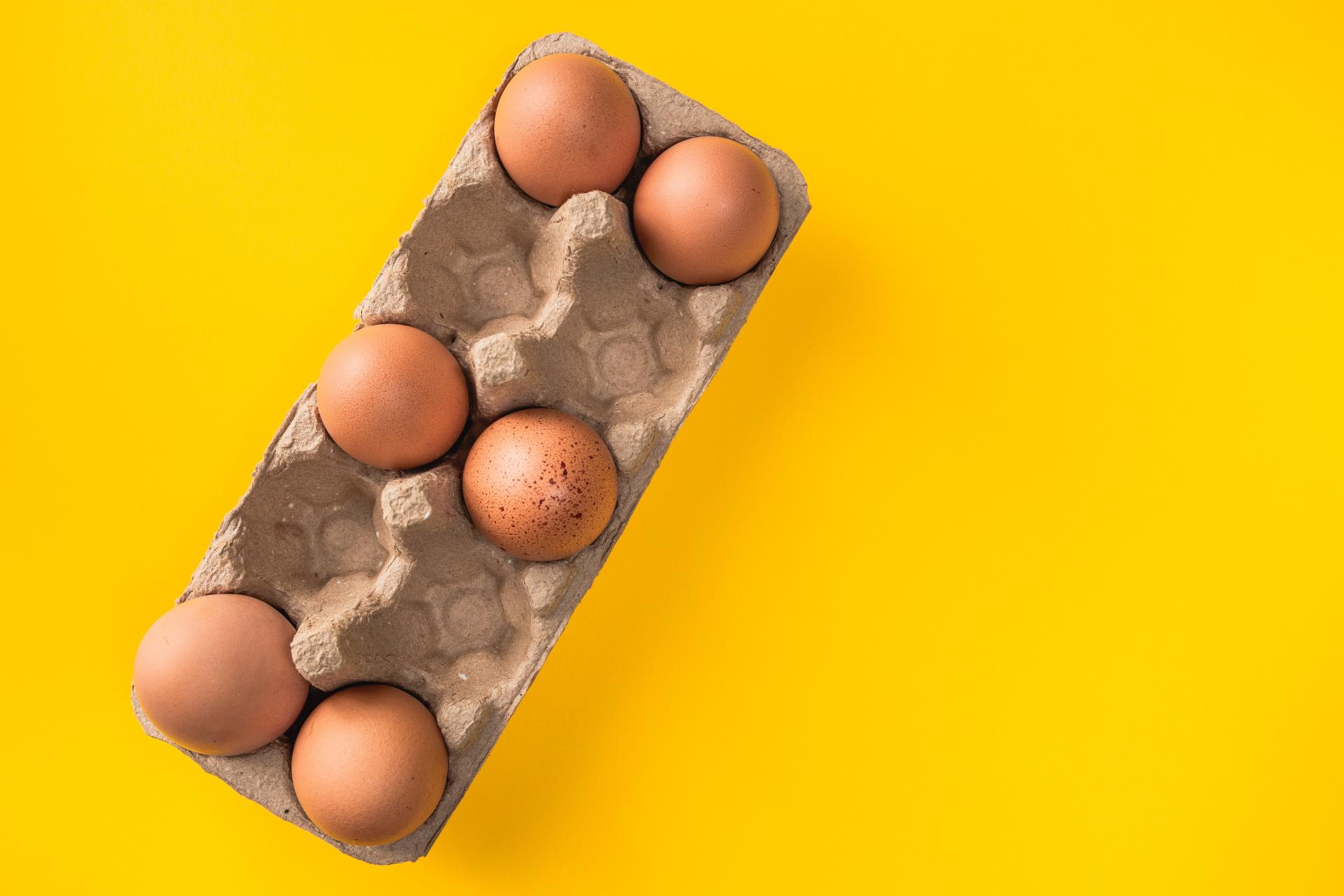
4.Brew grass tea.
Make a "nutrient tea" with grass clippings from your yard. Use the bag on your lawnmower to keep the clippings the next time you cut the grass. Use them to fill up a 5-gallon bucket roughly 2/3s of the way to the top, then fill it near the top with water. Stir it quickly, then let it sit for three days, stirring once each morning. When done, strain out the grass clippings and use your "tea" to water your plants, providing essential nitrogen, by mixing it with an equal amount of water and spraying over the plants.
5.Save and spread your fireplace ashes. Wood ash is high in calcium and potassium, making it an excellent supplement to your soil. Simply spread it right over the garden, using your hands to lightly turn it into the top layer of the soil.
*Vegetables, in particular, tend to love ash, as it promotes healthy root growth.
*Warning: Do not use fireplace ashes on plants that love acidic soil like blueberries, roses, or azaleas.

6.Try banana peels. Cut up banana peels and add them to the hole when planting. Banana peels don't do much once the plant is already in the ground, but it can work wonders as you're planting. The peels contain a lot of potassium, which promotes a plant's root development. Cut up half a banana peel and toss it in the bottom of your hole before adding the plant.
7.Make your own compost. Composting at home is easy, so you can turn all of your old food scraps, leaves, and plant clippings into food for your garden. When organic matter decays, it releases nutrients that can enrich your soil. You can build your own compost in your yard, or you can try one of the commercially-available kitchen compost units.
via wikihow
1.Use water from a freshwater aquarium.
Freshwater aquariums contain nitrogen, which can provide your plants with a healthy boost. Fish naturally release nitrogen into the water, making their "waste" water an important source of nutrients for plants. Instead of dumping it down the toilet, use it to water your plants once a week. Fish waste, as well, contains trace elements important for plant growth.

2.Create a coffee compost.
Mix coffee grounds with leafy yard waste for "quick compost," especially for acid-loving plants. Mix your coffee grounds with an equal amount of dead leaves, pine straw, and other brown yard clippings and sprinkle over the soil once a month. Roses, azaleas, hydrangeas, and many other plants crave a low pH soil and will respond particularly well.
3.Use eggshells.
Spread old eggshells over your garden, or in the bottom of planting holes, for a calcium boost. Plants like tomatoes and peppers particularly love calcium, but your whole garden will enjoy eggshells. Calcium, which is over 90% of an eggshell's makeup, helps a plant develop strong cell walls. To use eggshells, lightly crush up the shells and spread over the garden. You can till them into the soil or leave them right on top -- they decompose very quickly.

4.Brew grass tea.
Make a "nutrient tea" with grass clippings from your yard. Use the bag on your lawnmower to keep the clippings the next time you cut the grass. Use them to fill up a 5-gallon bucket roughly 2/3s of the way to the top, then fill it near the top with water. Stir it quickly, then let it sit for three days, stirring once each morning. When done, strain out the grass clippings and use your "tea" to water your plants, providing essential nitrogen, by mixing it with an equal amount of water and spraying over the plants.
5.Save and spread your fireplace ashes. Wood ash is high in calcium and potassium, making it an excellent supplement to your soil. Simply spread it right over the garden, using your hands to lightly turn it into the top layer of the soil.
*Vegetables, in particular, tend to love ash, as it promotes healthy root growth.
*Warning: Do not use fireplace ashes on plants that love acidic soil like blueberries, roses, or azaleas.

6.Try banana peels. Cut up banana peels and add them to the hole when planting. Banana peels don't do much once the plant is already in the ground, but it can work wonders as you're planting. The peels contain a lot of potassium, which promotes a plant's root development. Cut up half a banana peel and toss it in the bottom of your hole before adding the plant.
7.Make your own compost. Composting at home is easy, so you can turn all of your old food scraps, leaves, and plant clippings into food for your garden. When organic matter decays, it releases nutrients that can enrich your soil. You can build your own compost in your yard, or you can try one of the commercially-available kitchen compost units.
via wikihow
0
0




